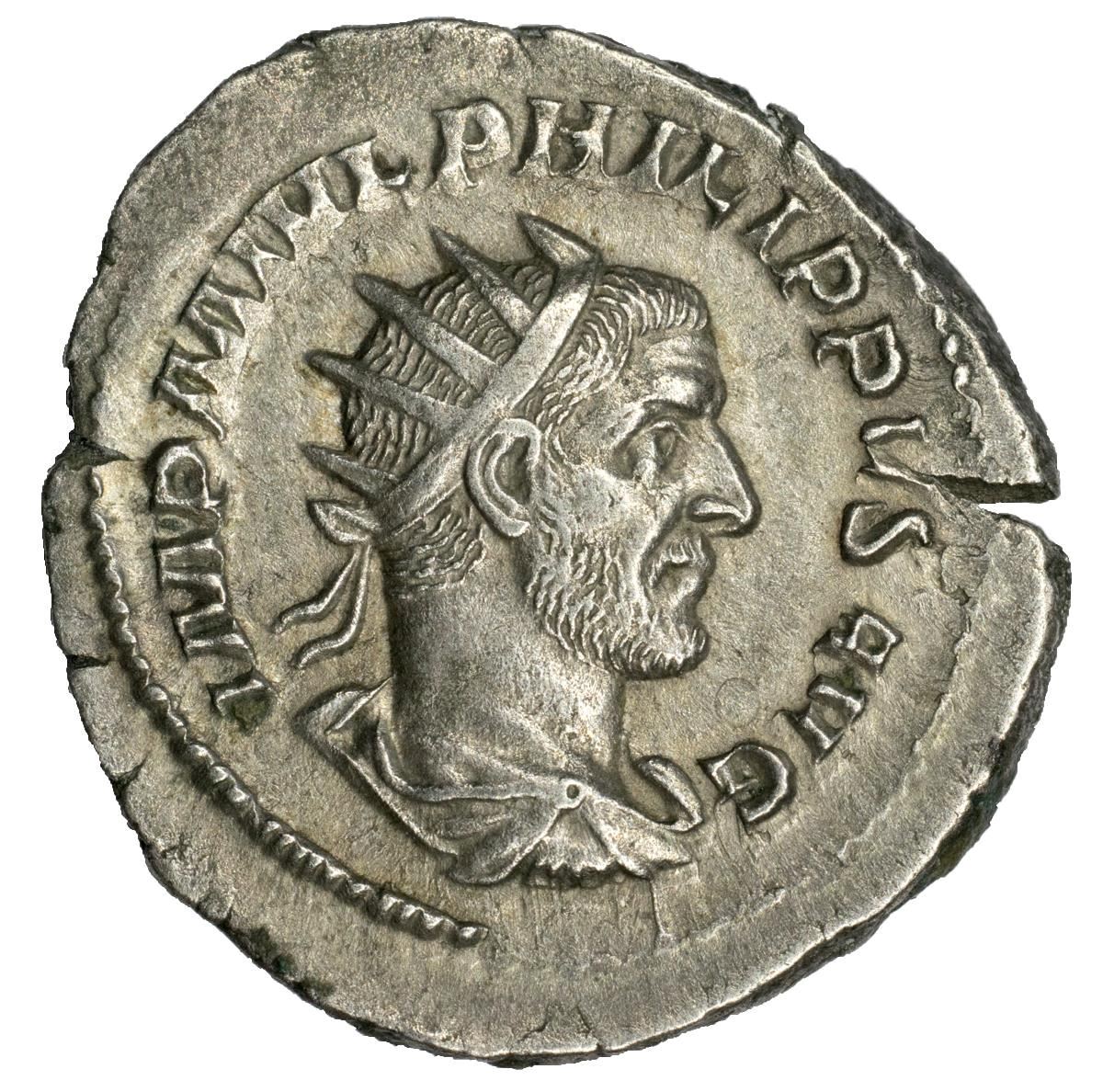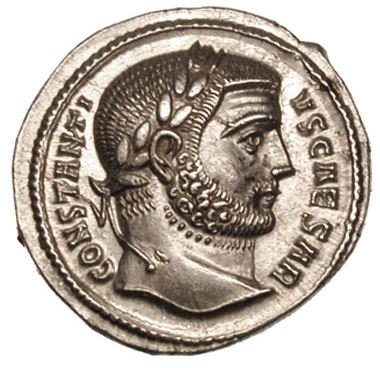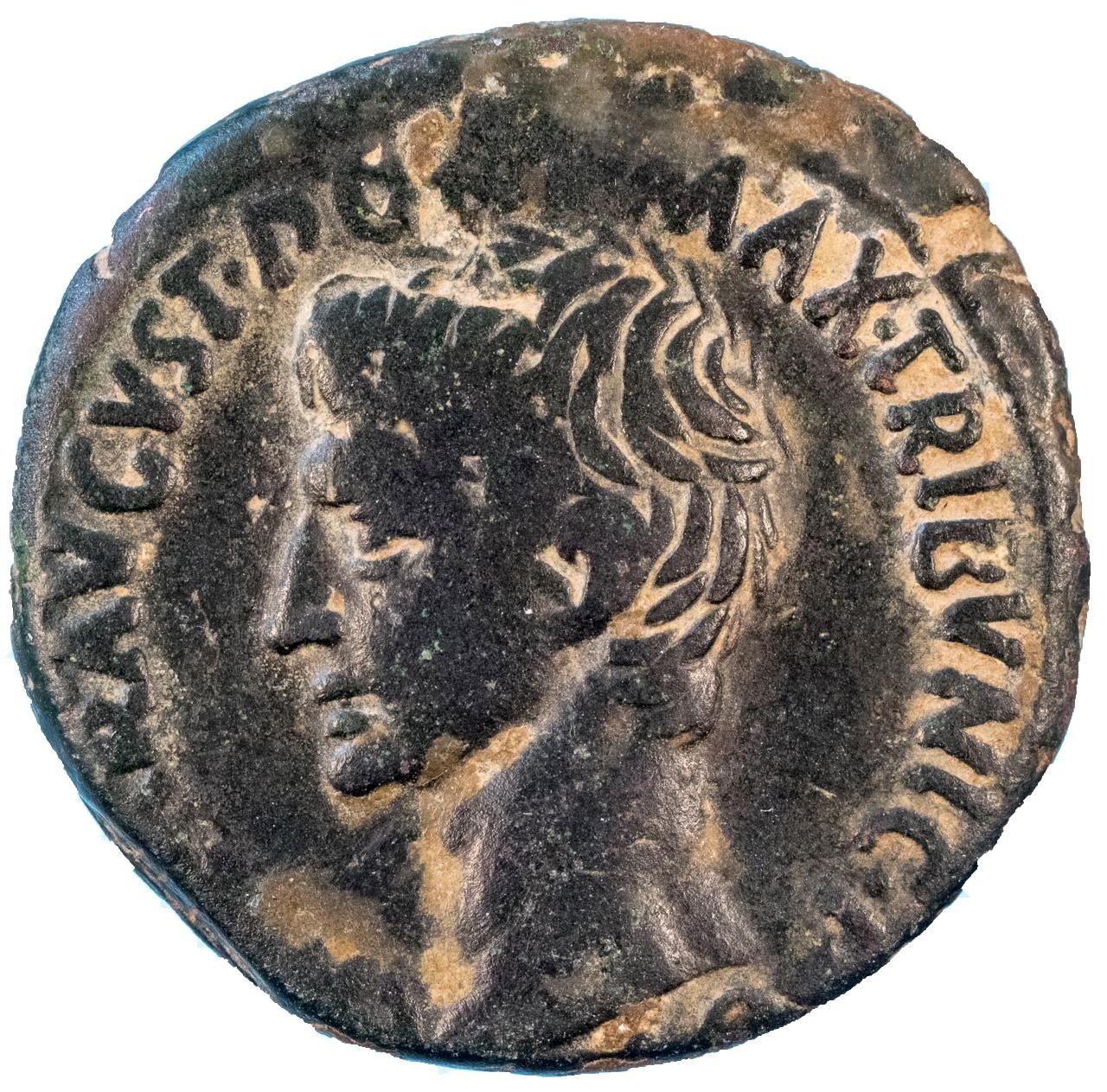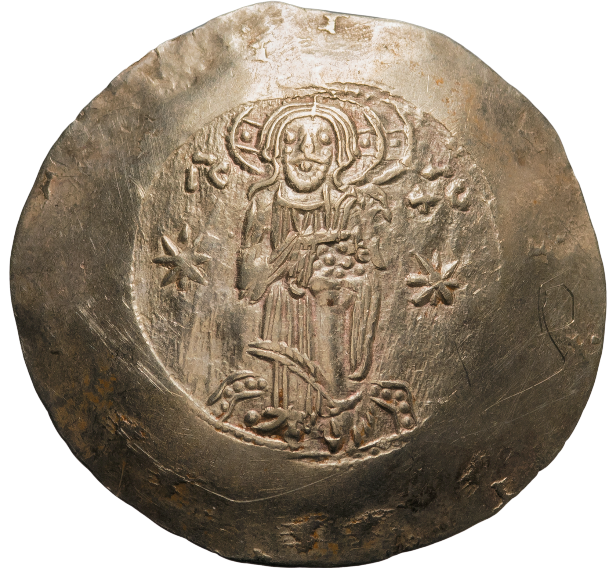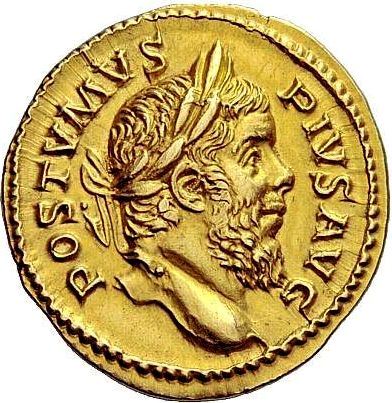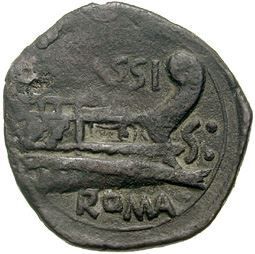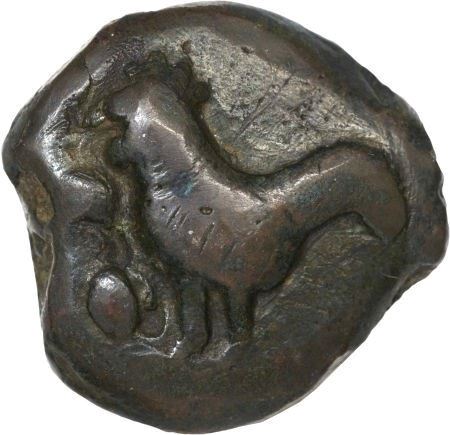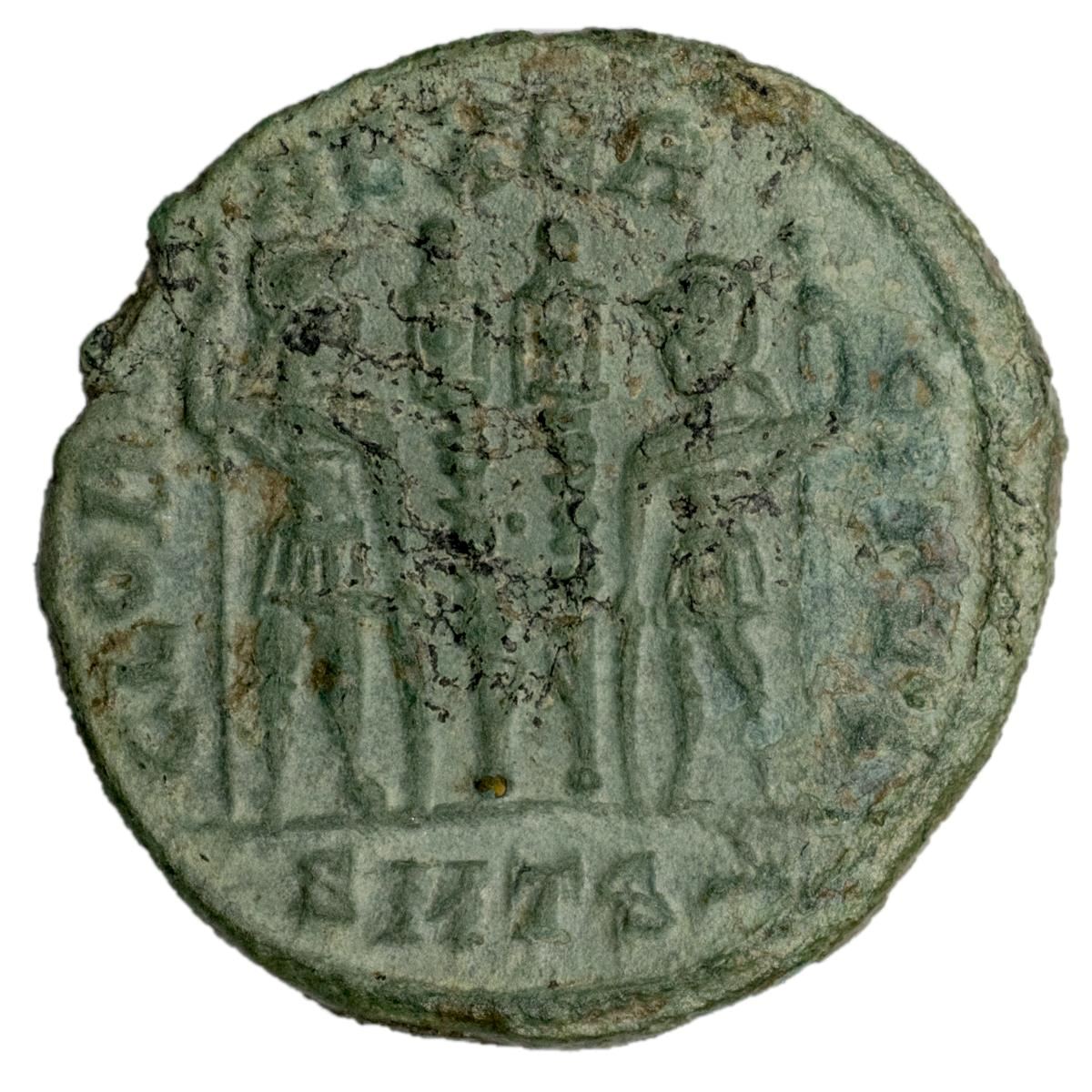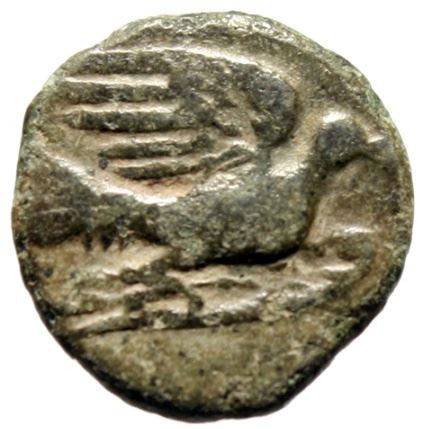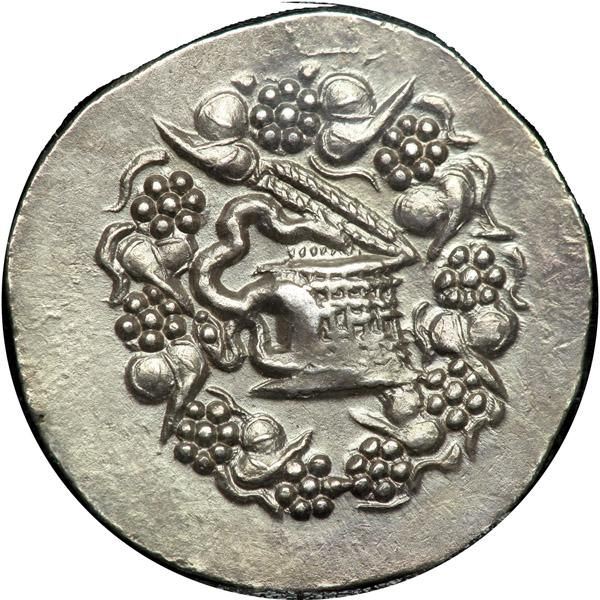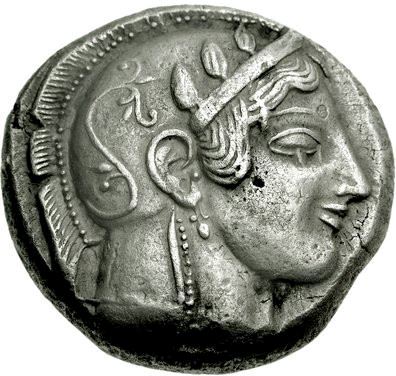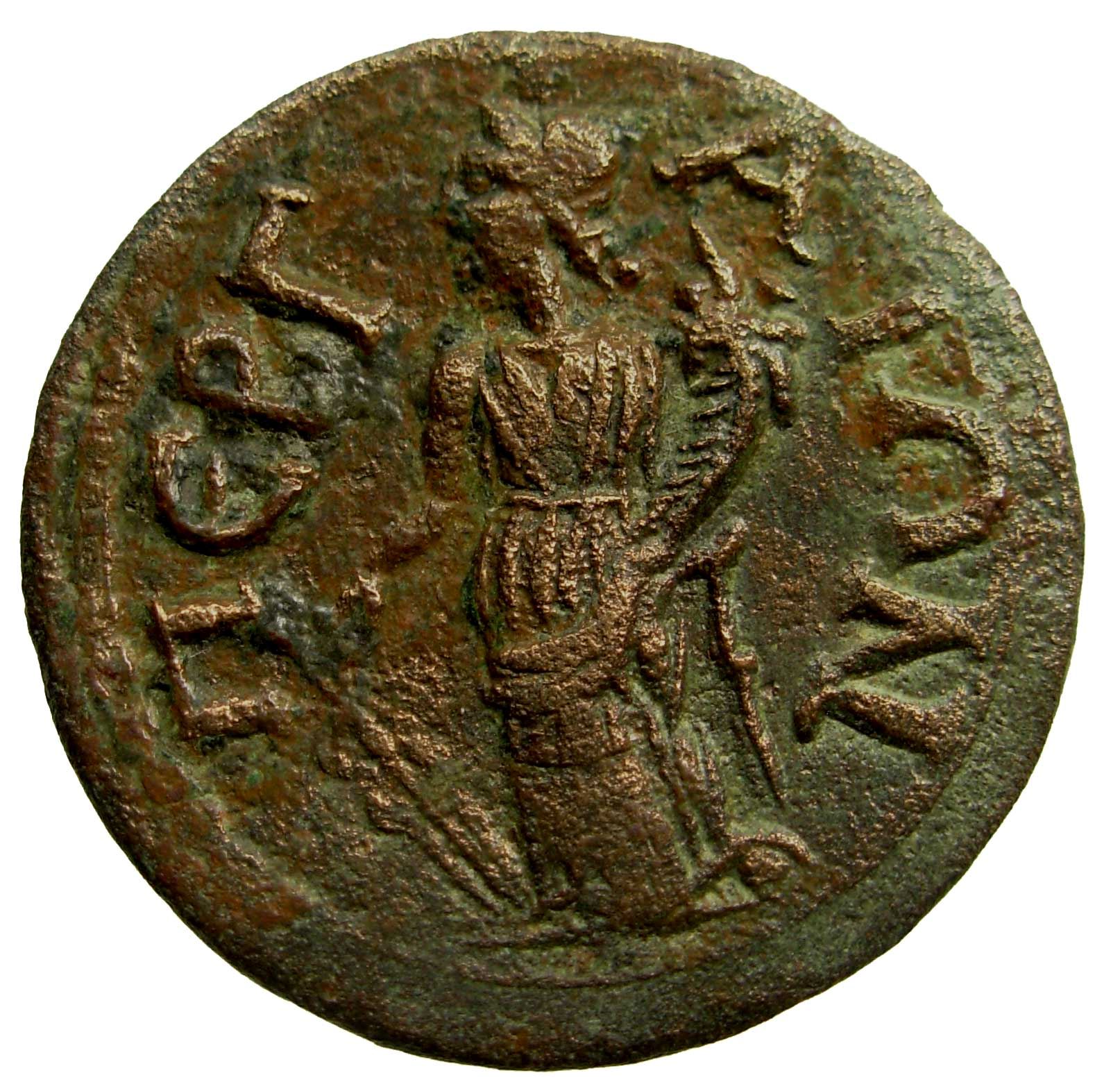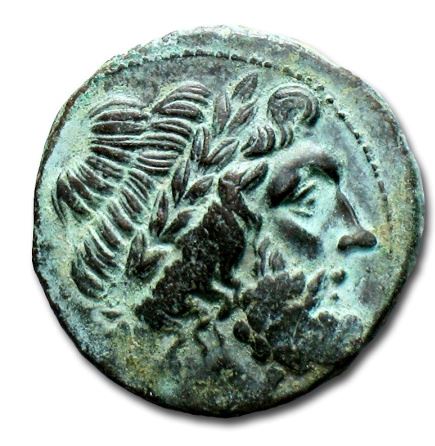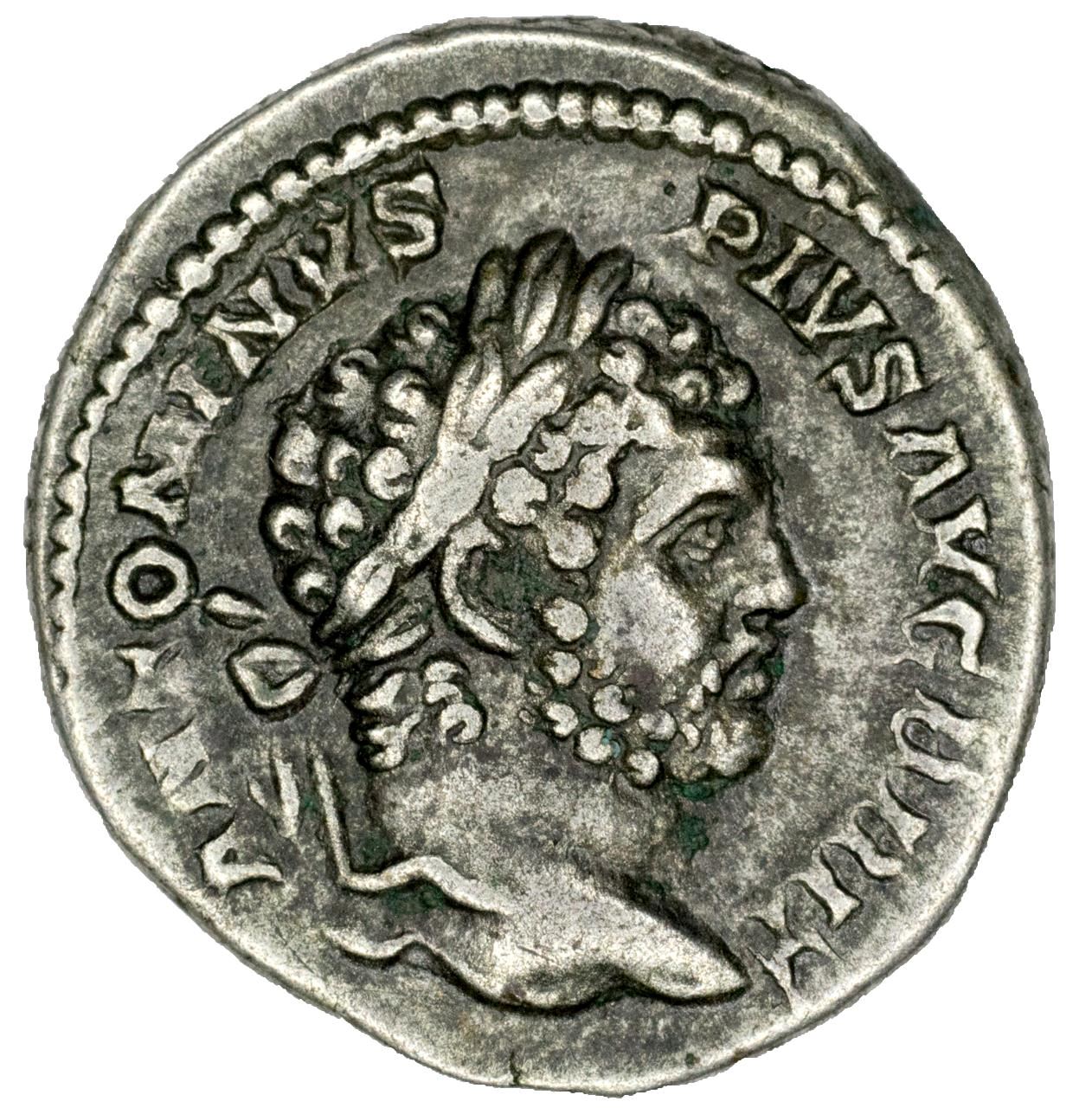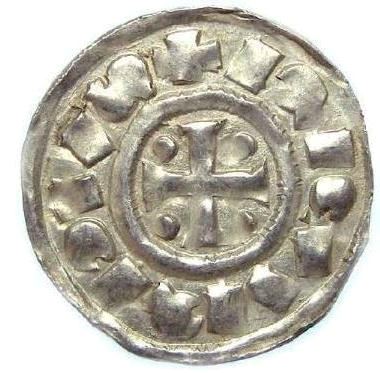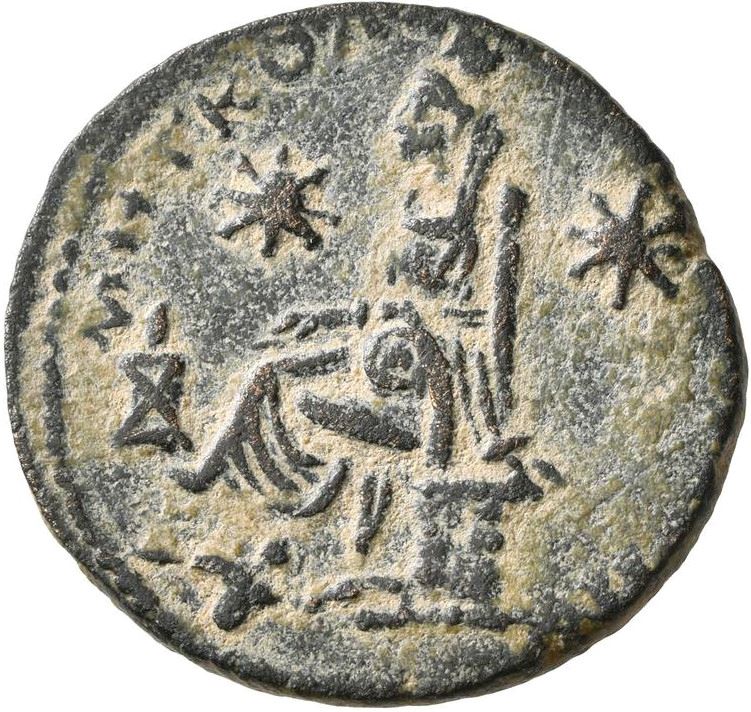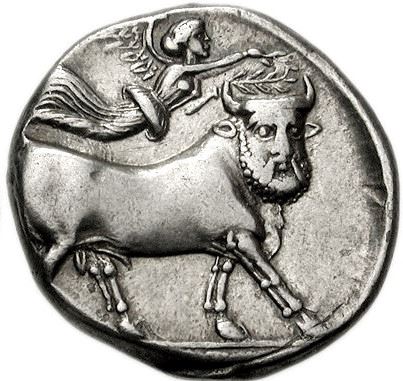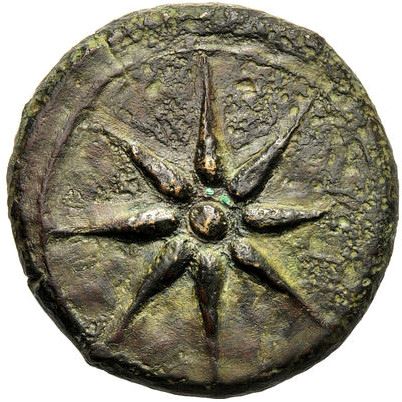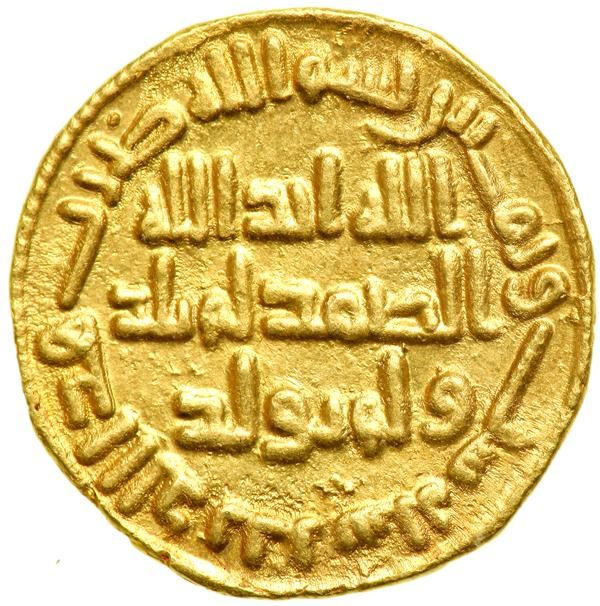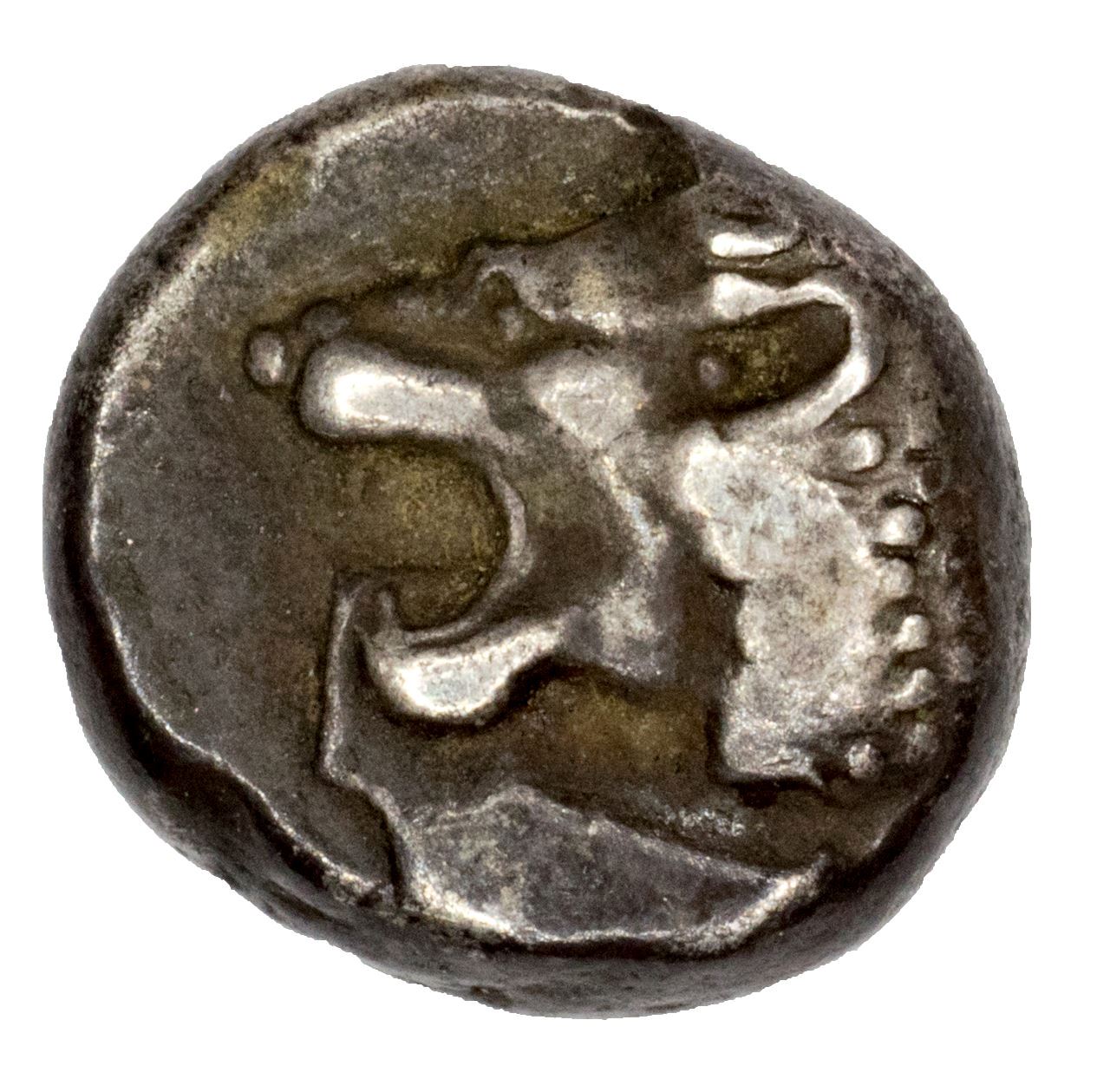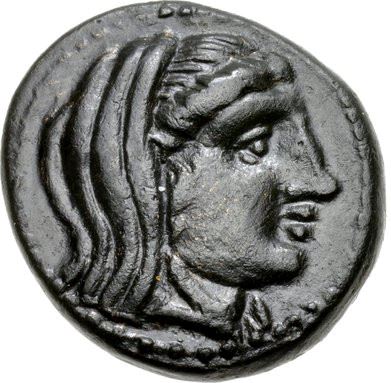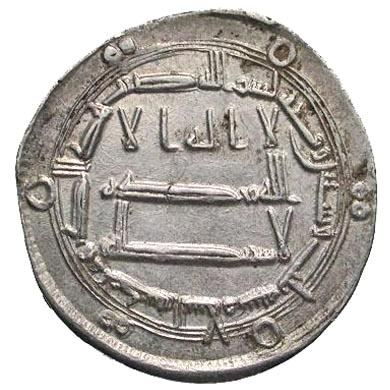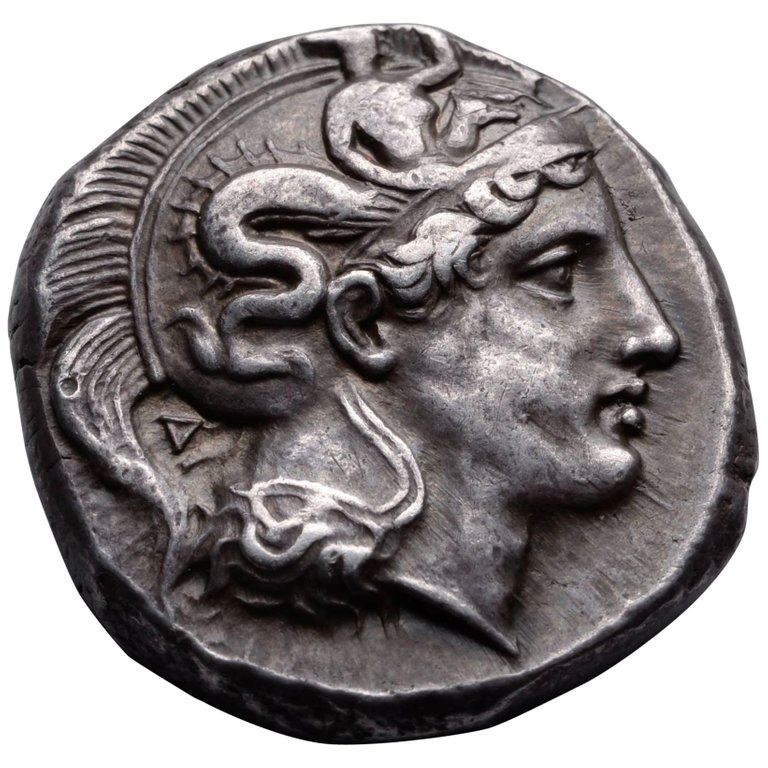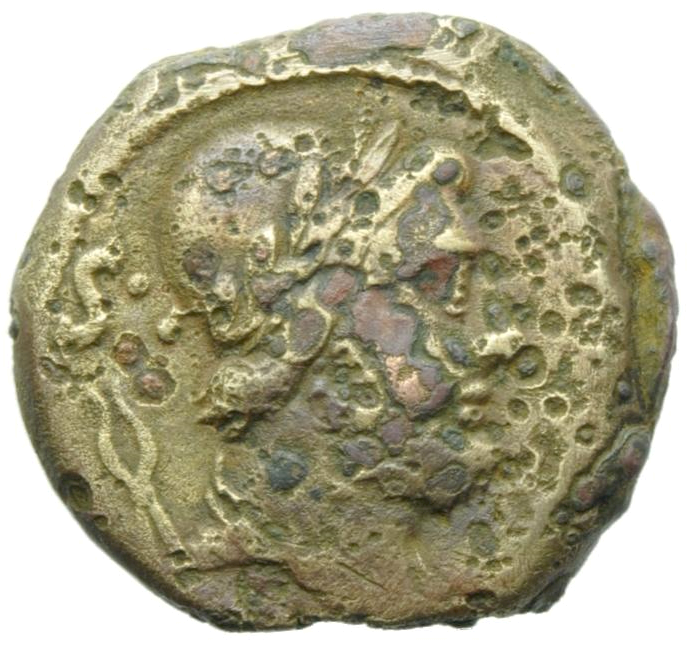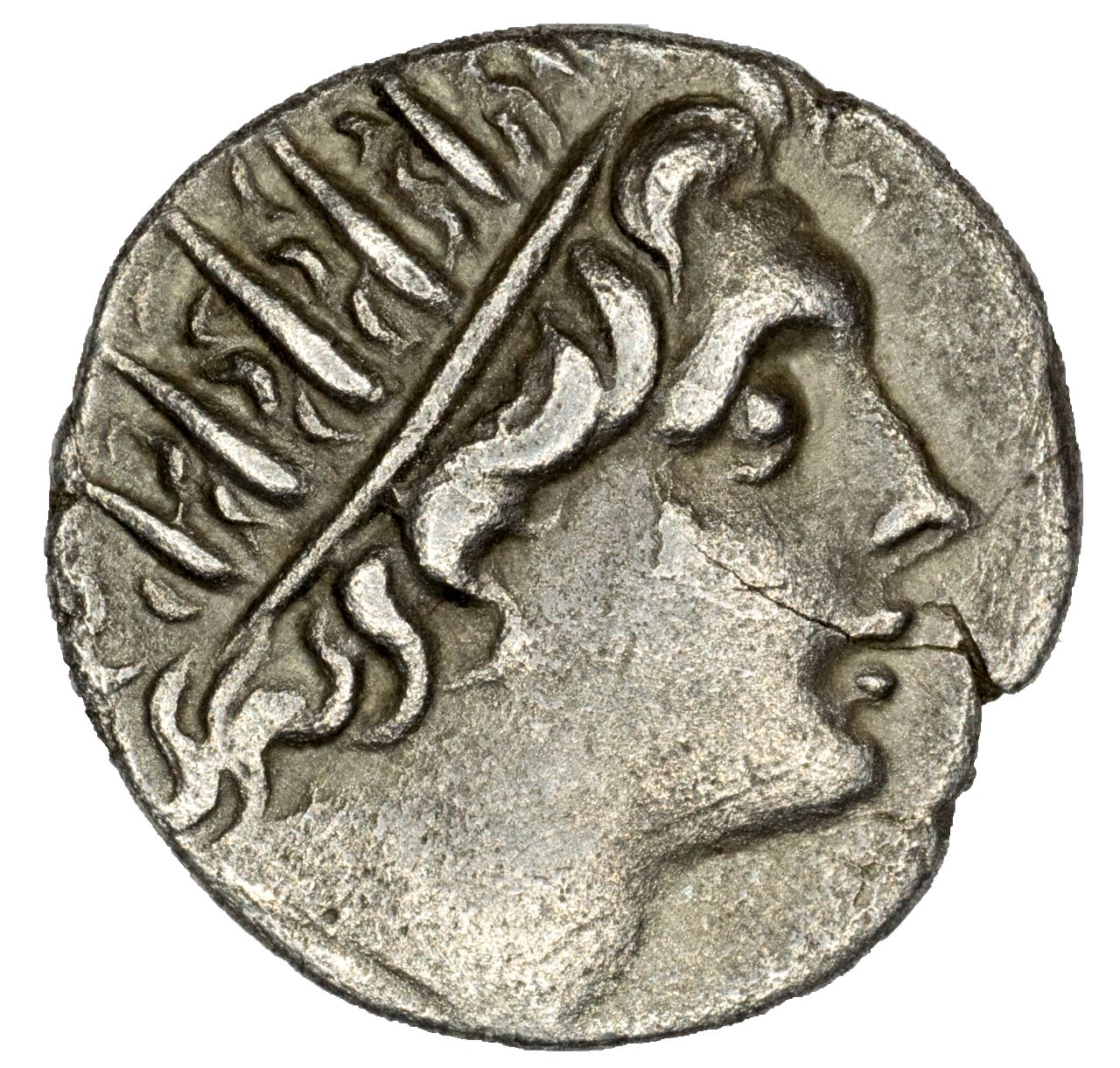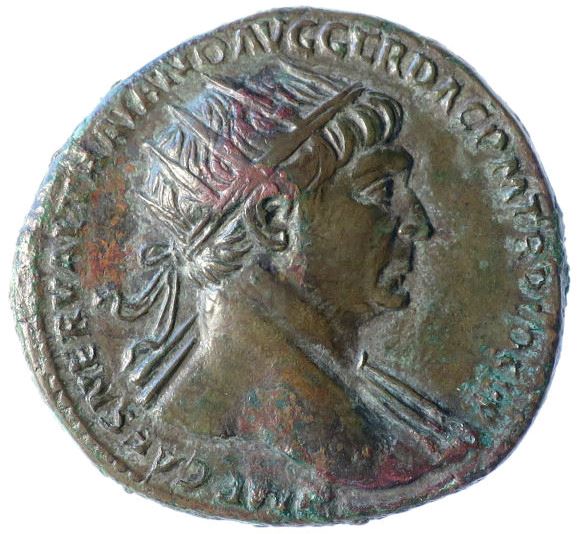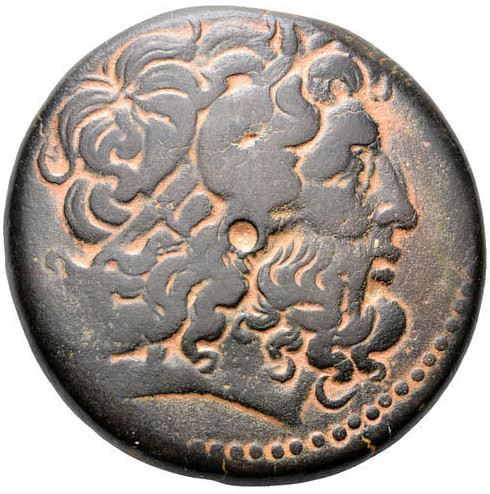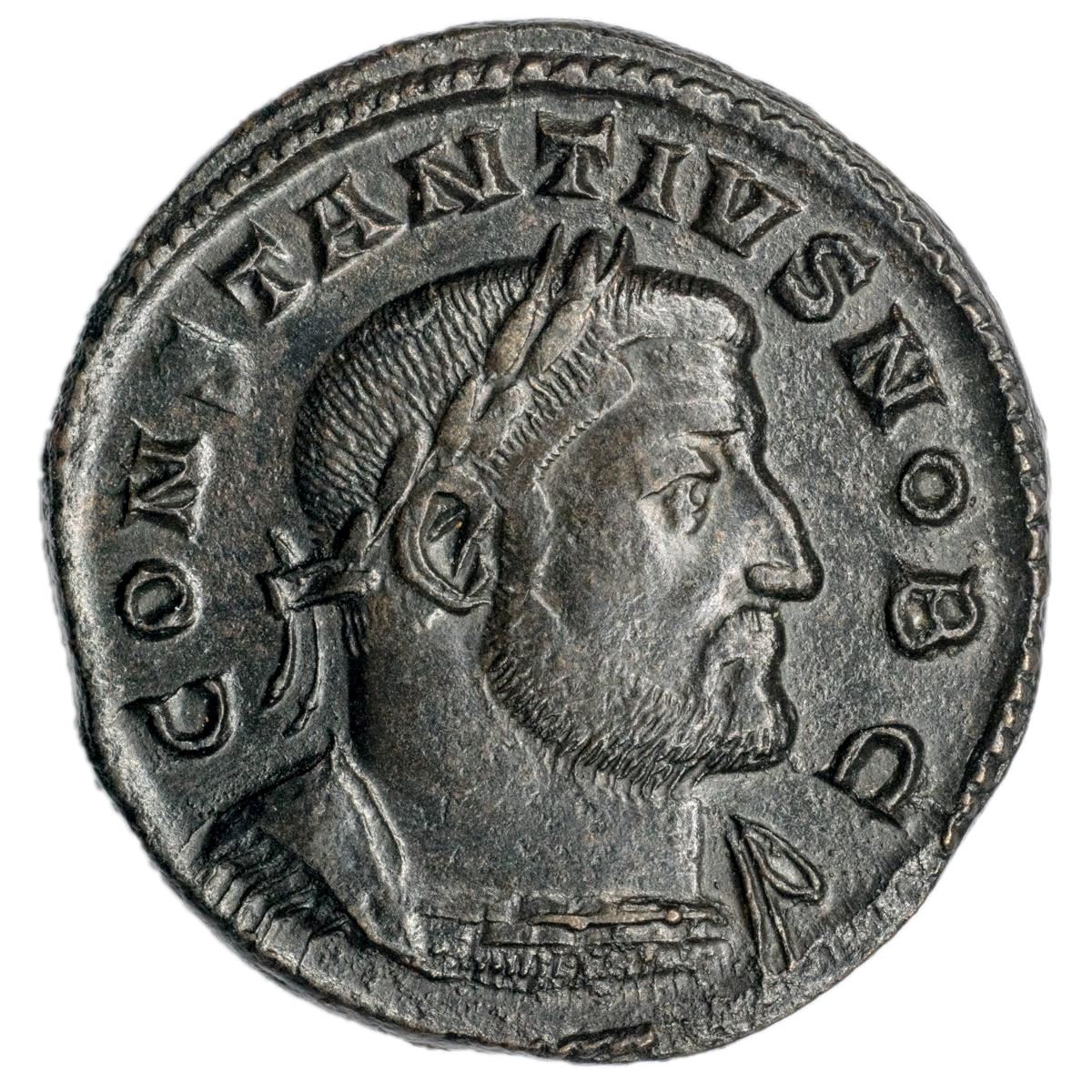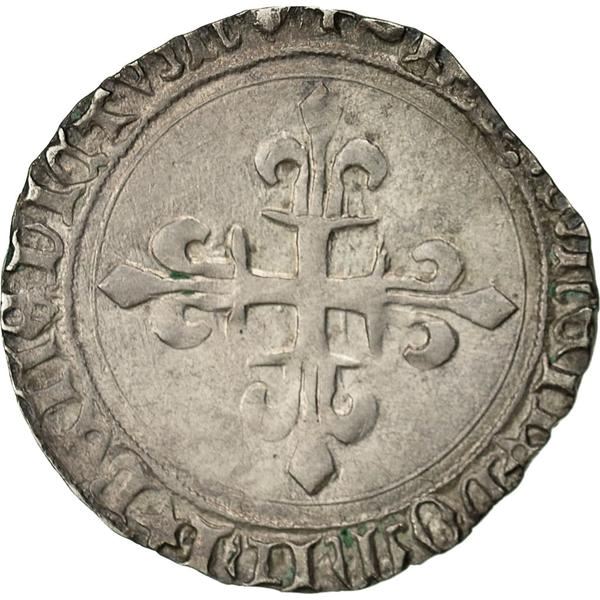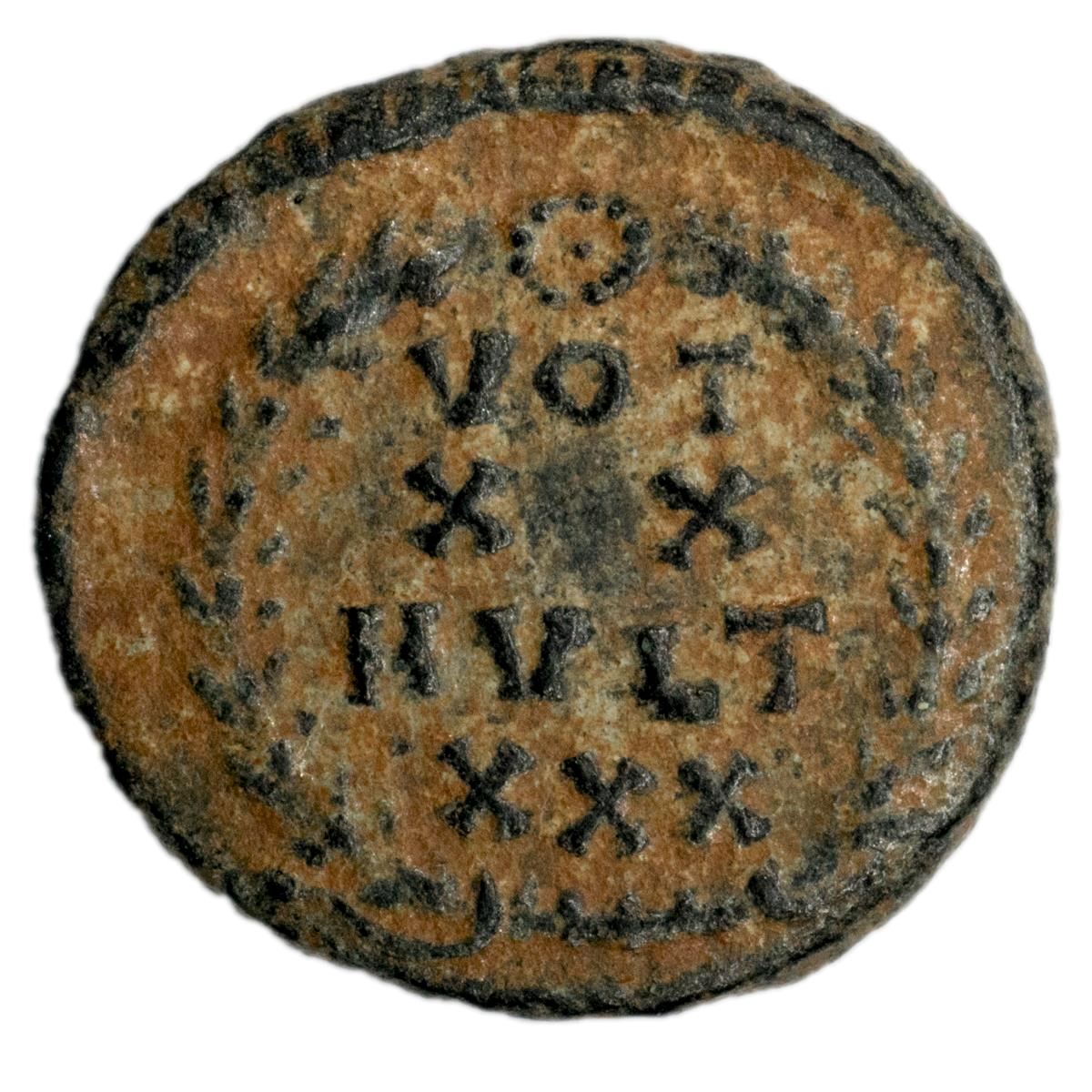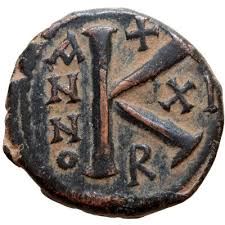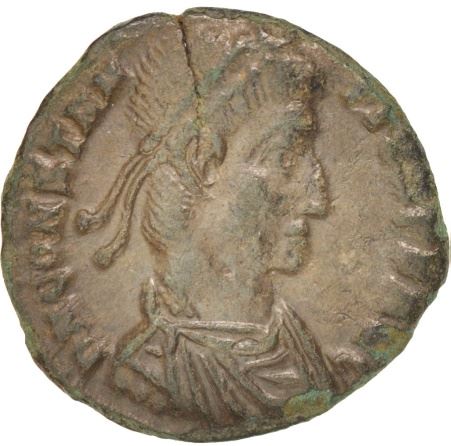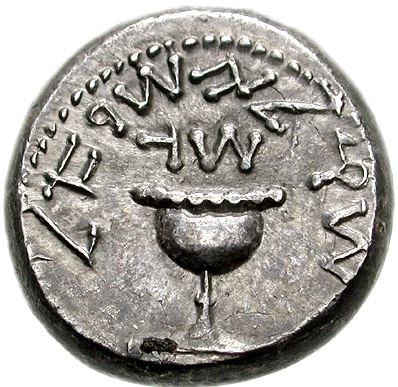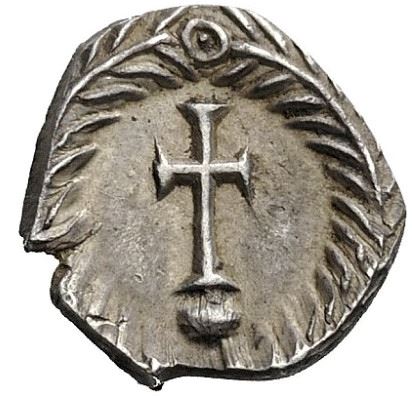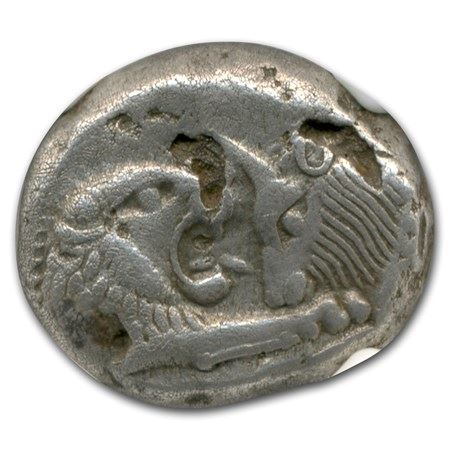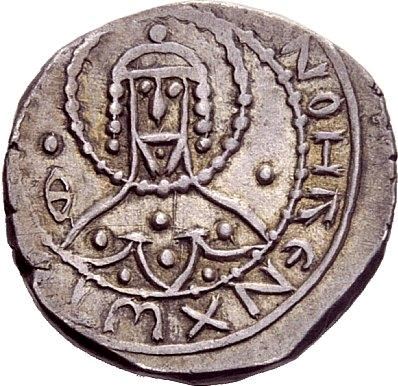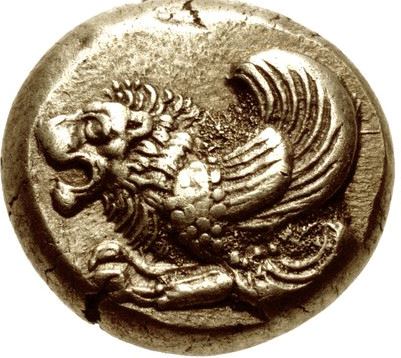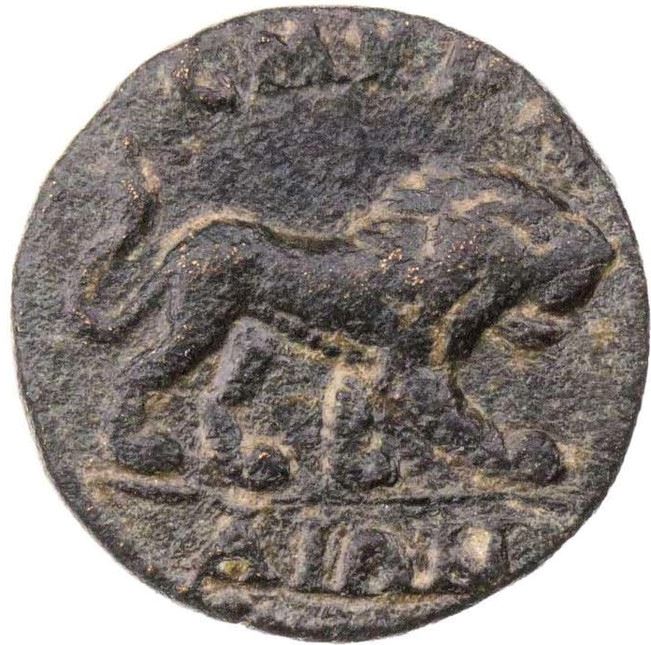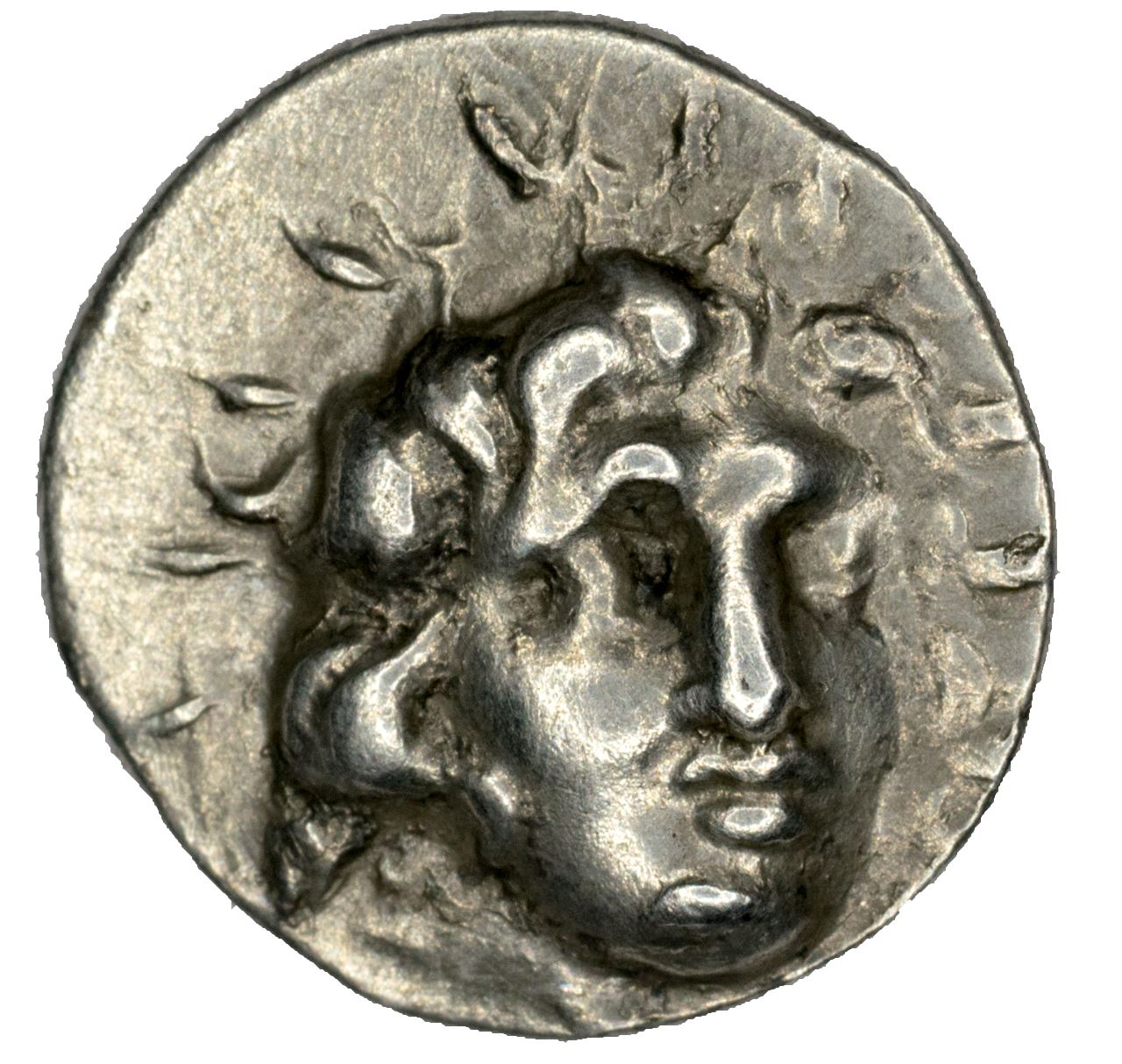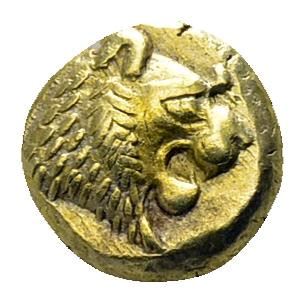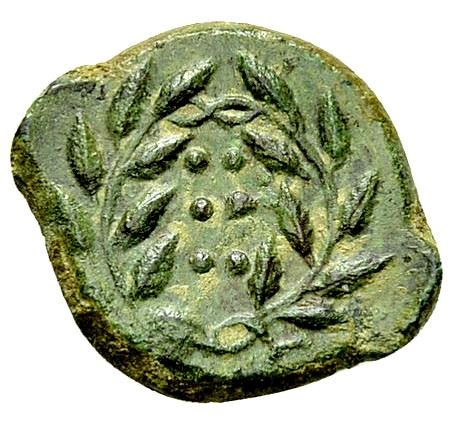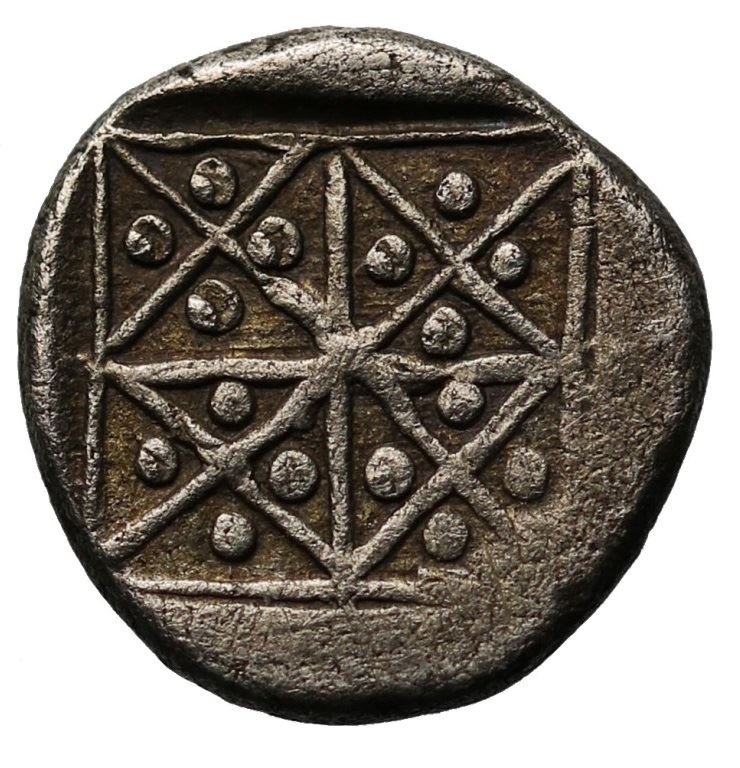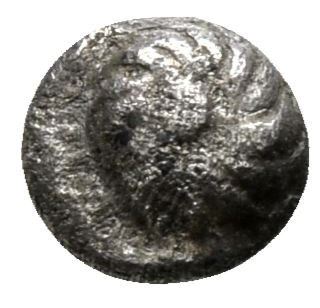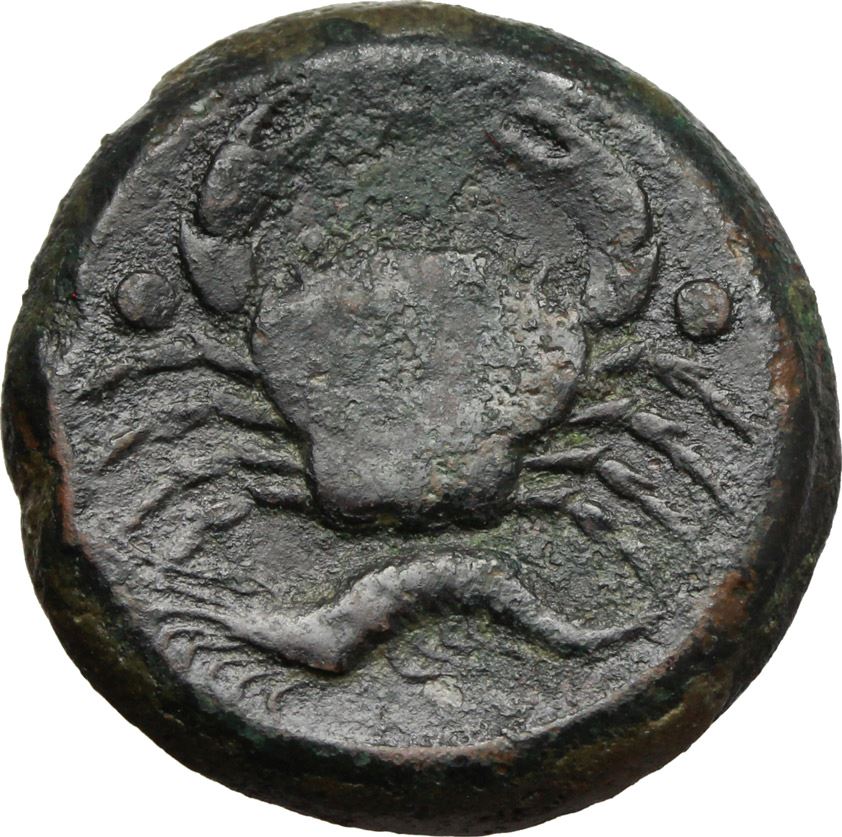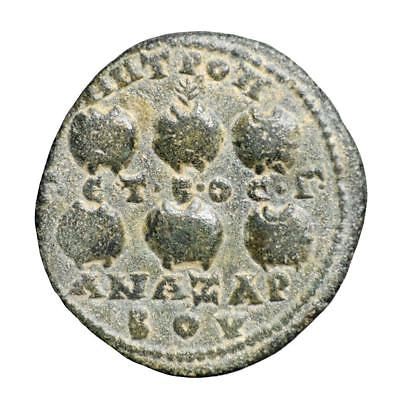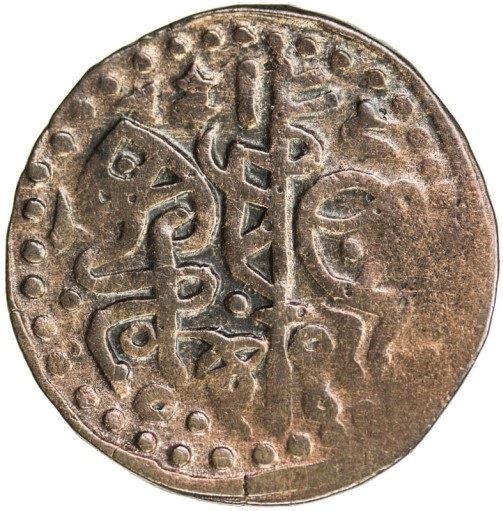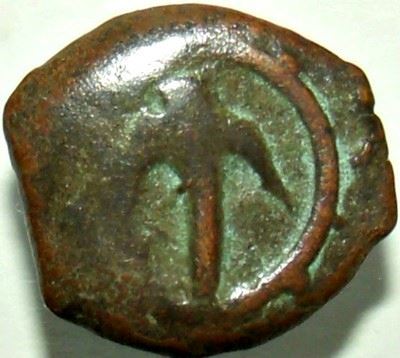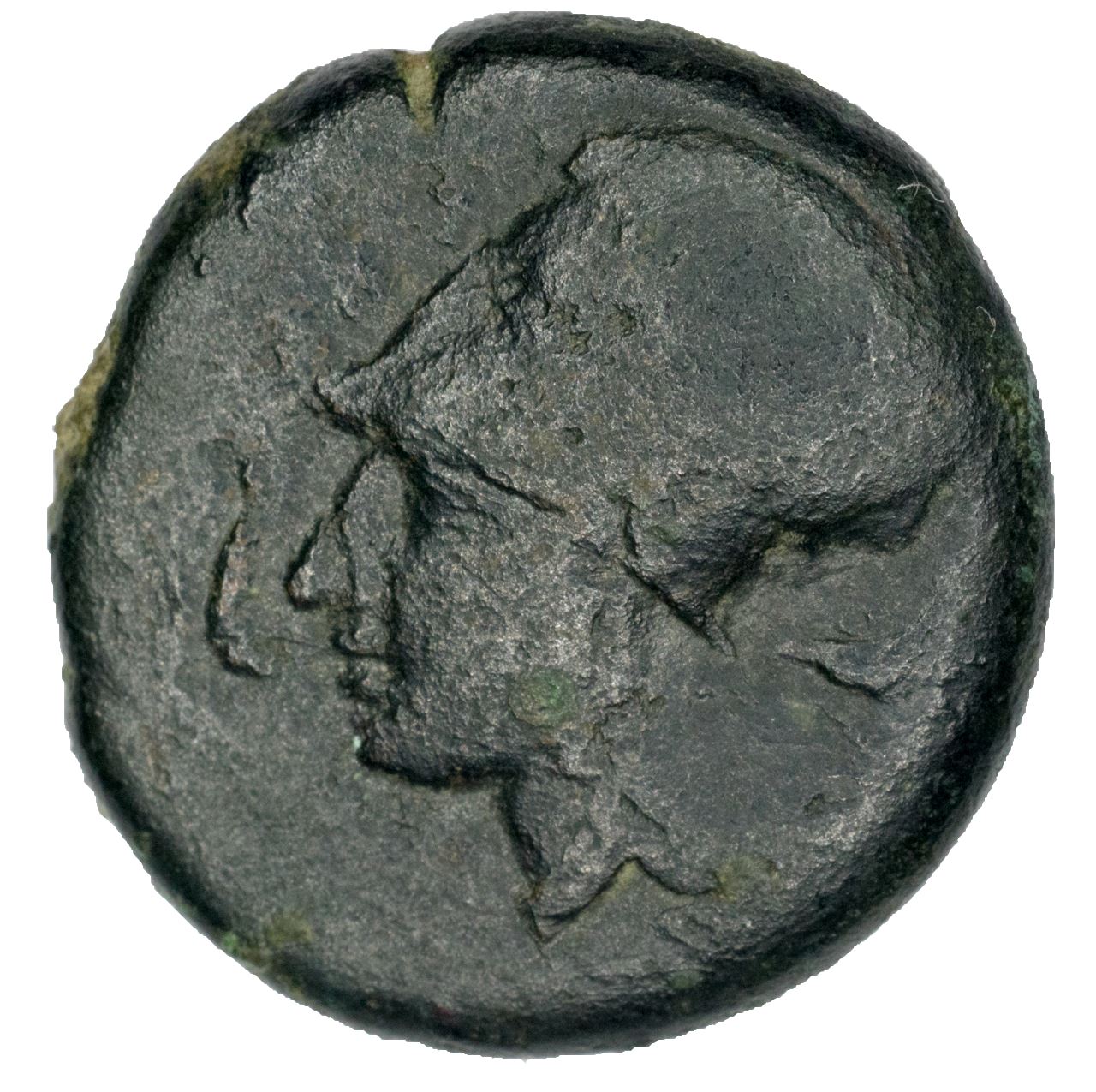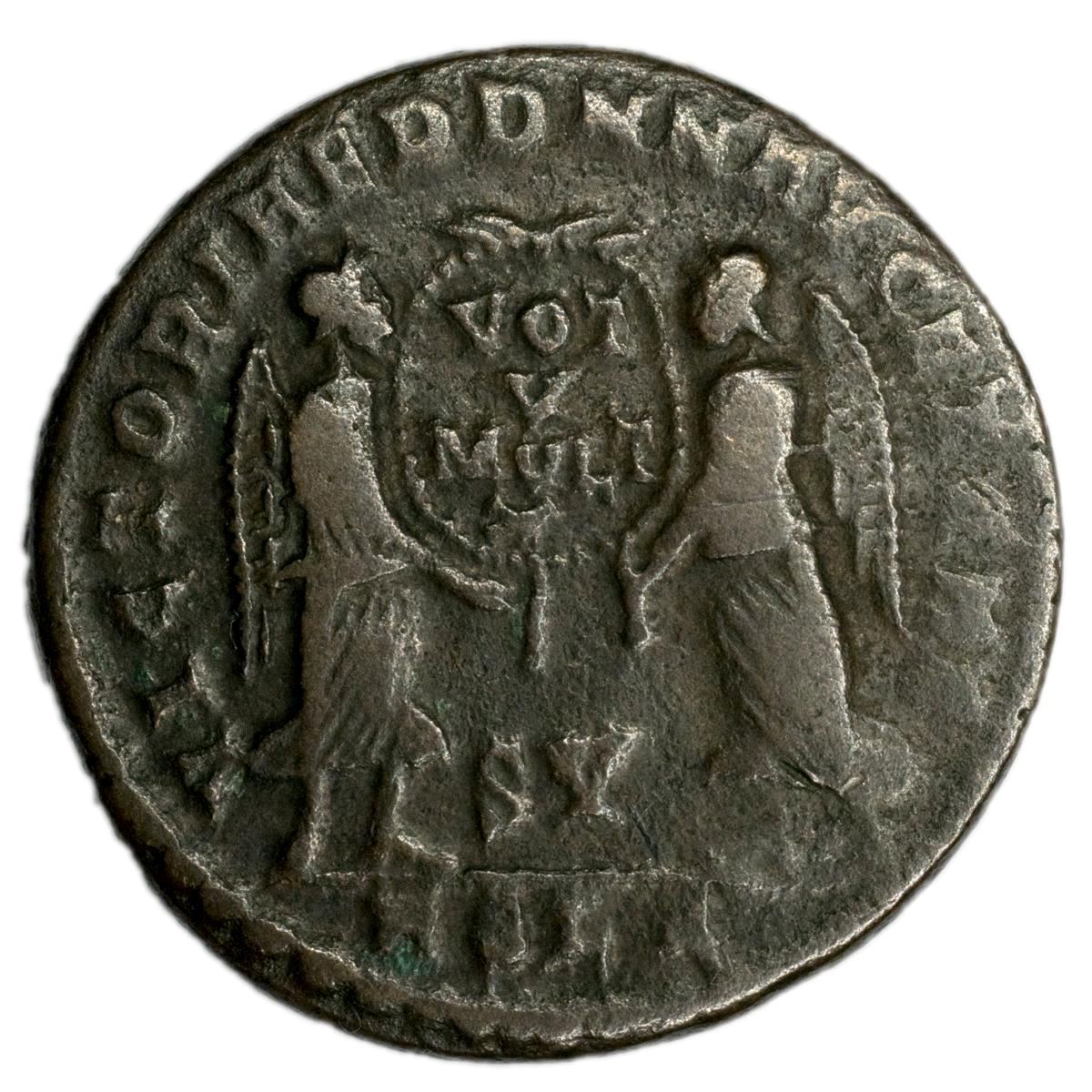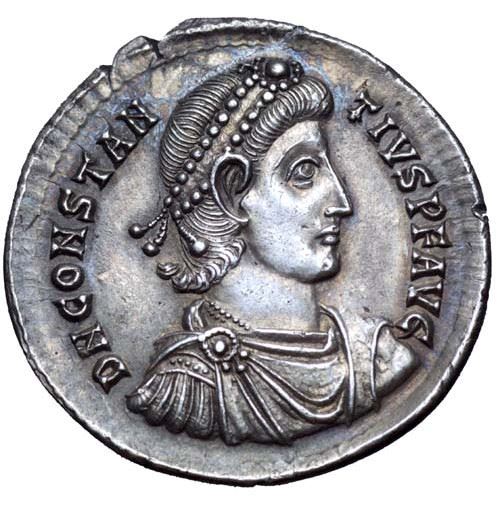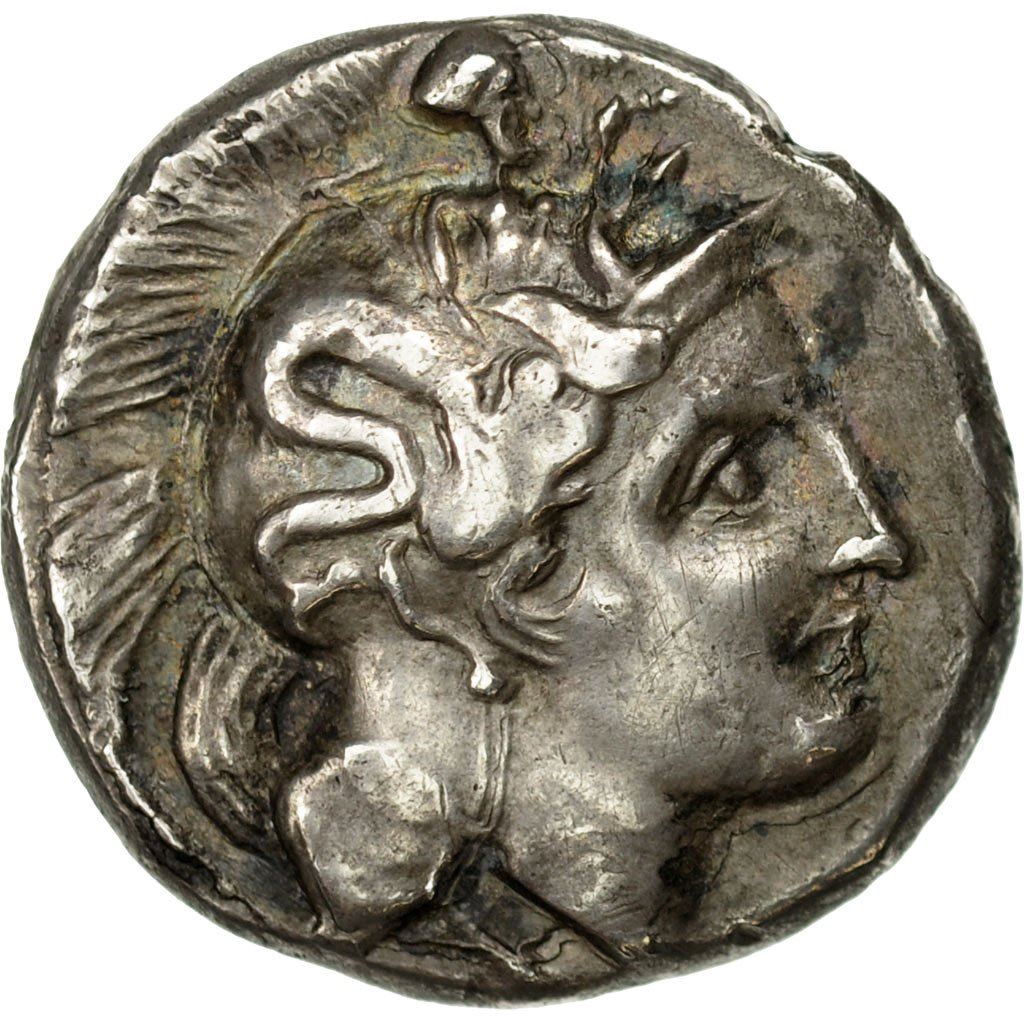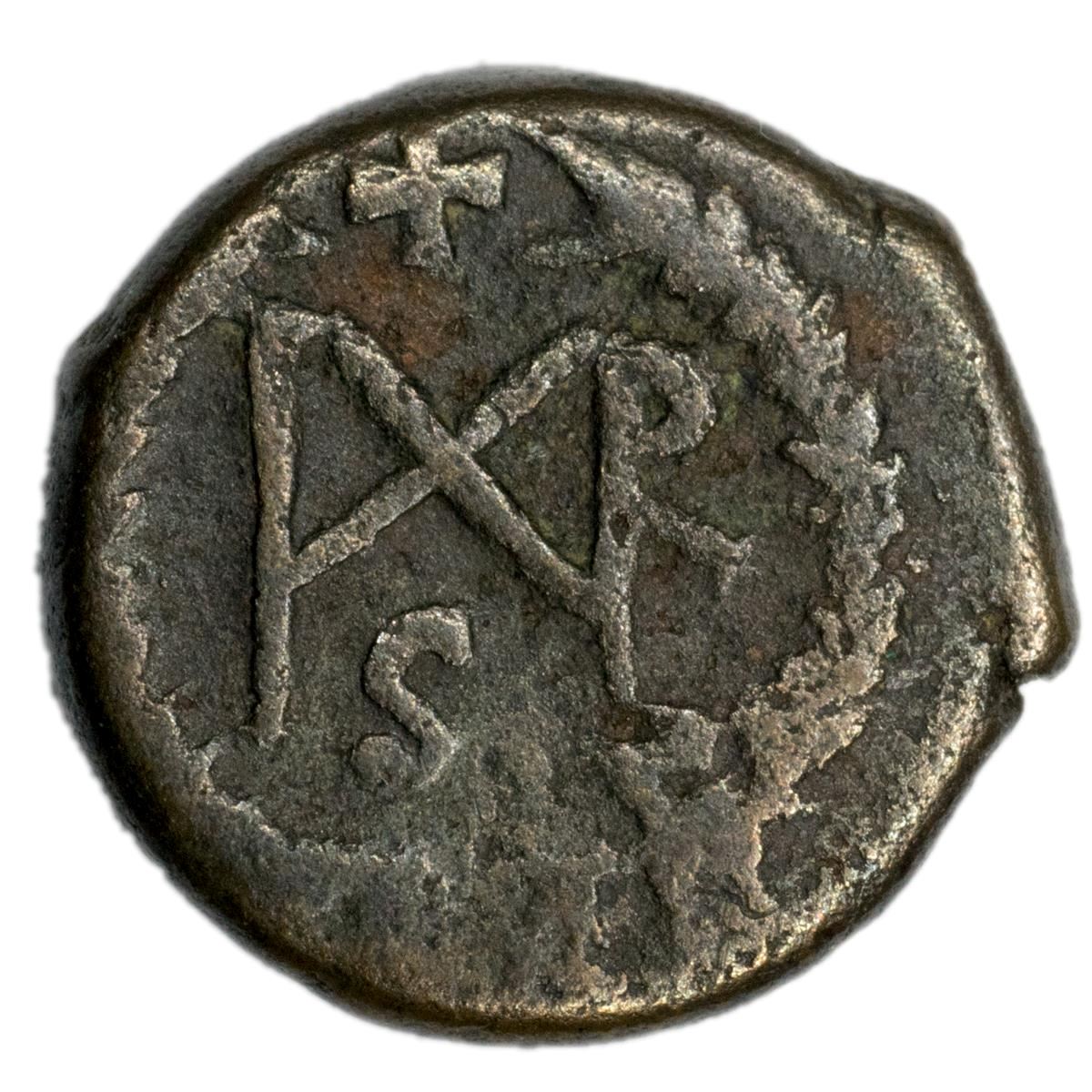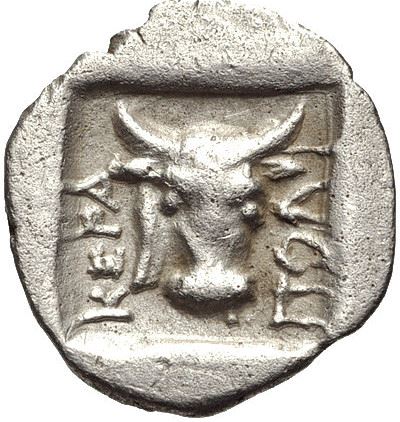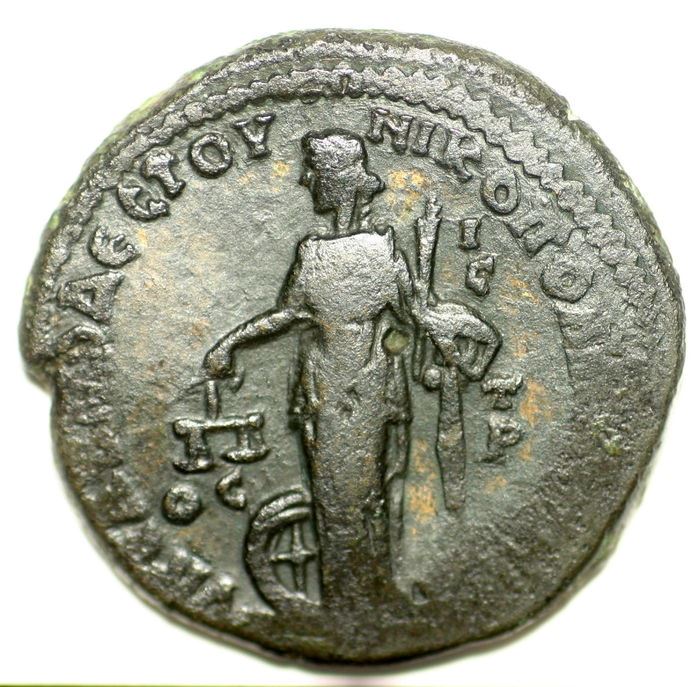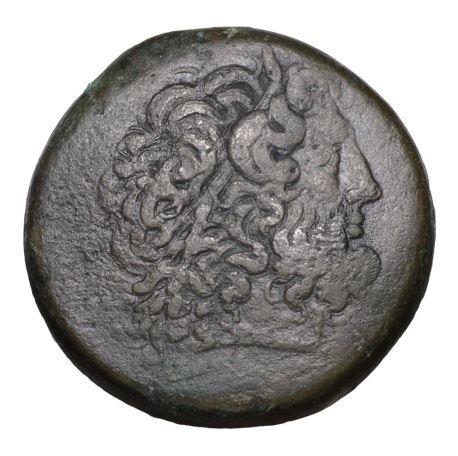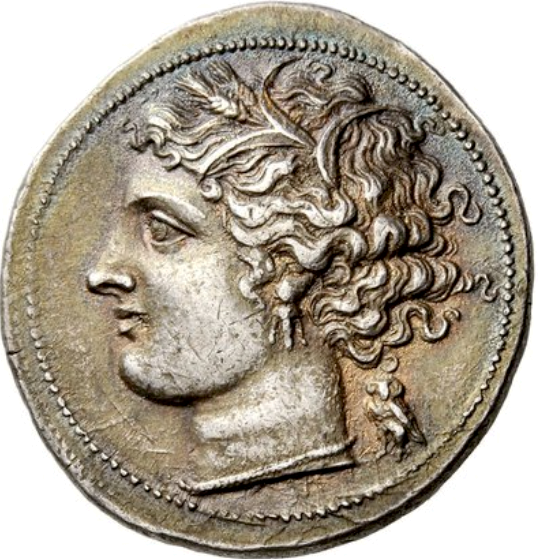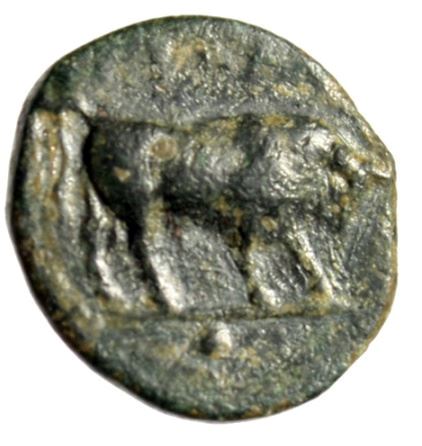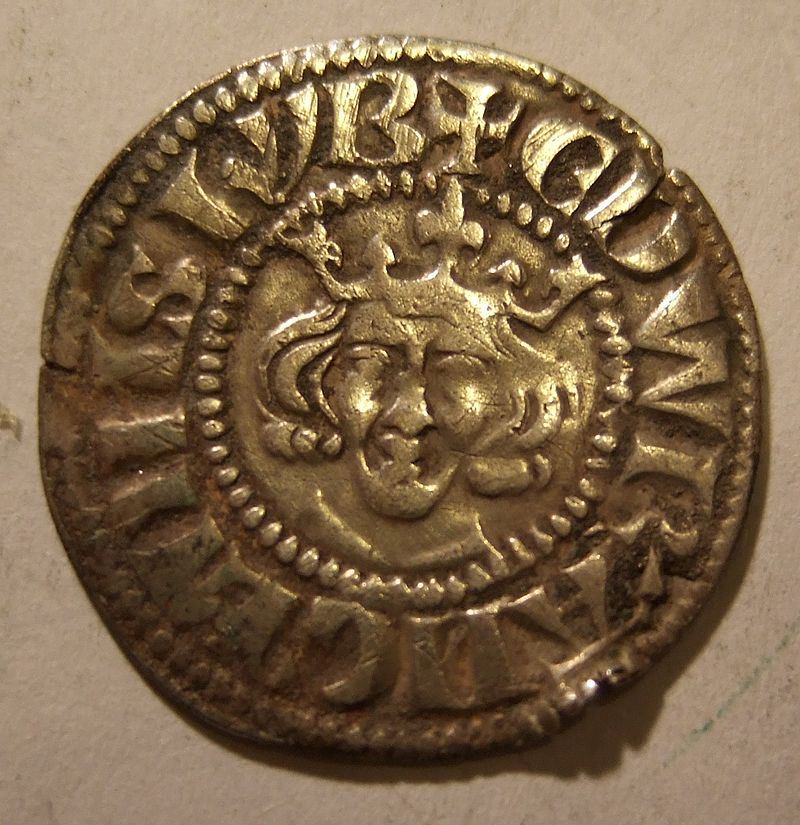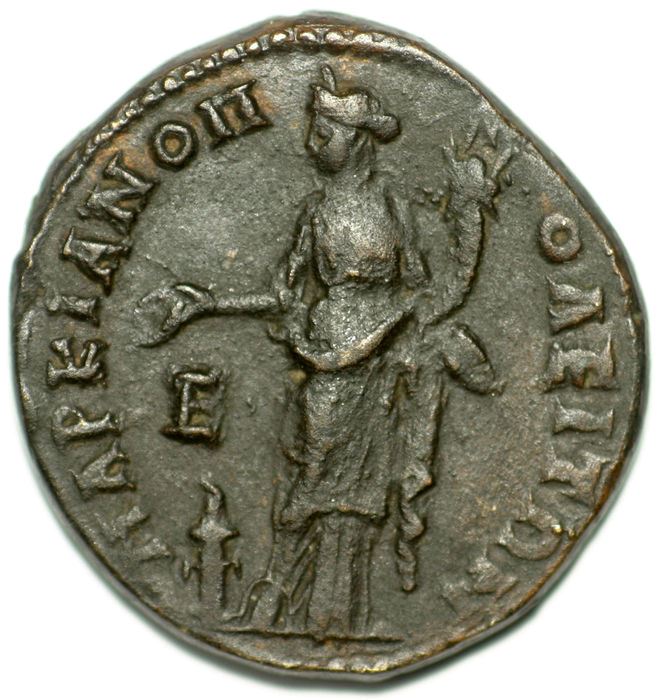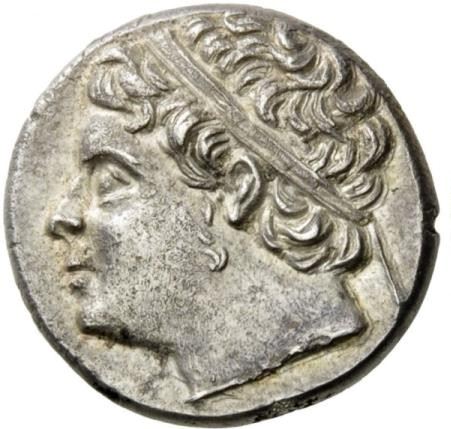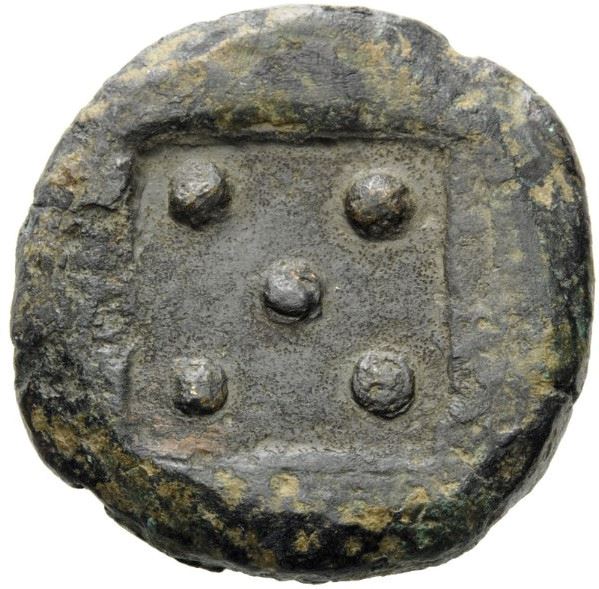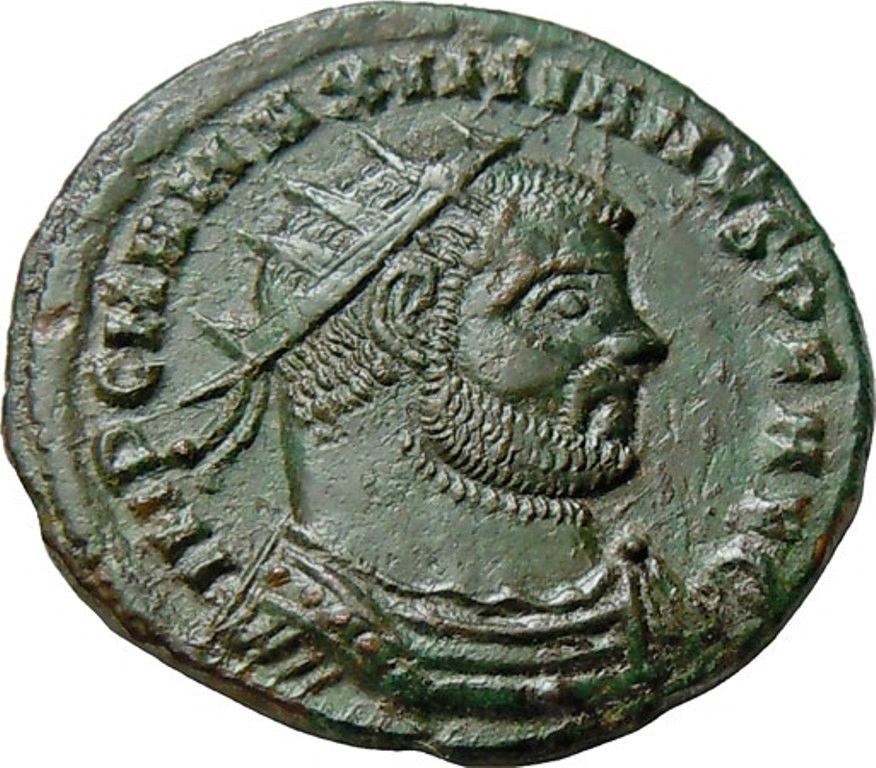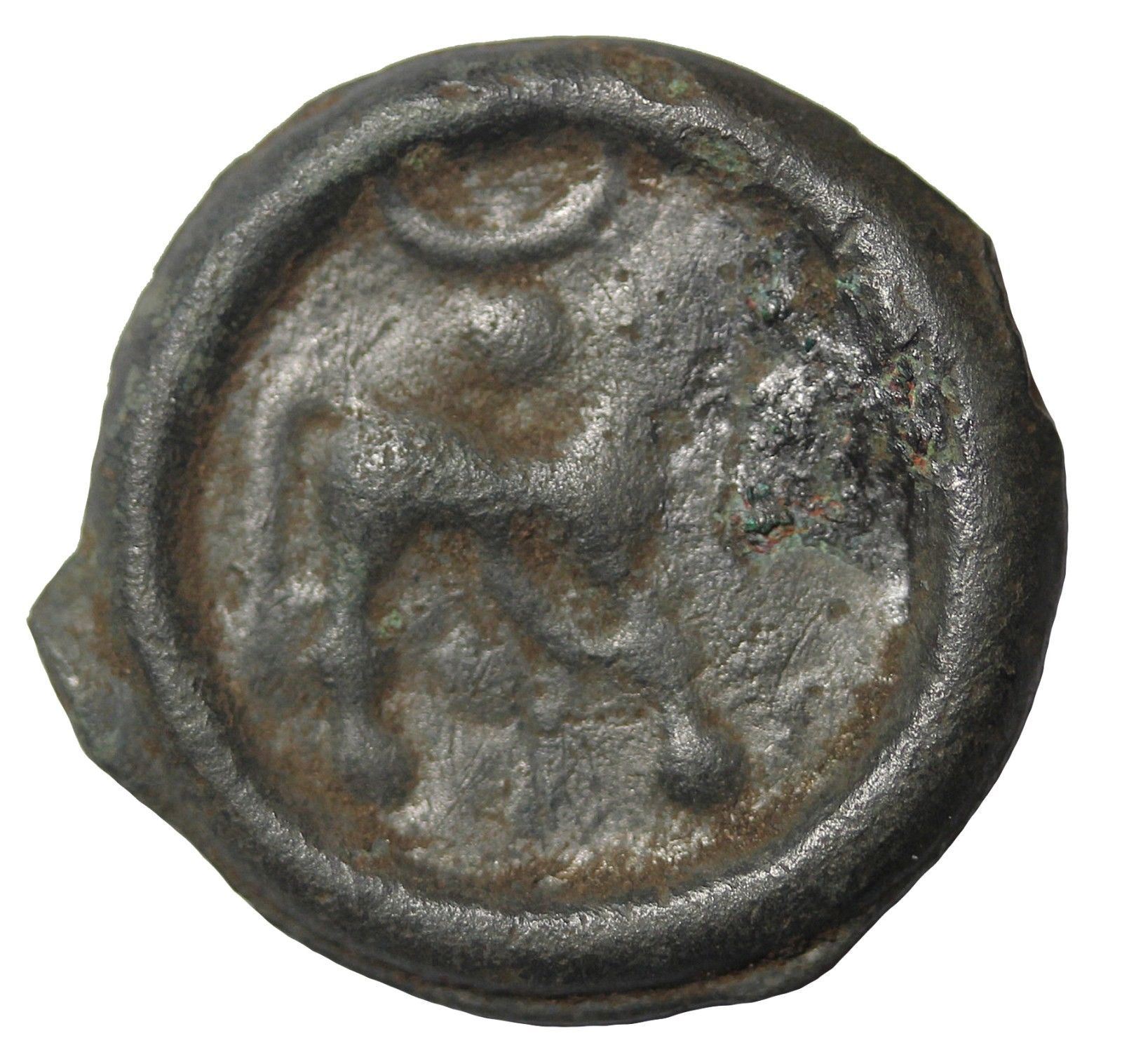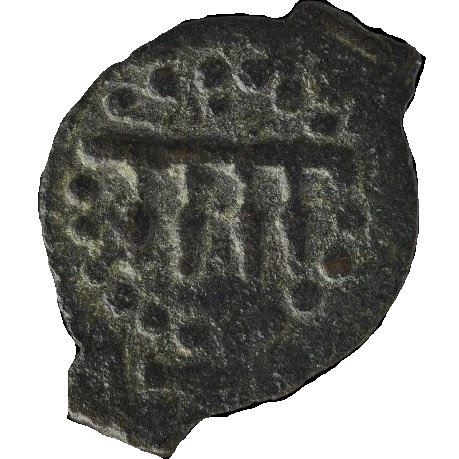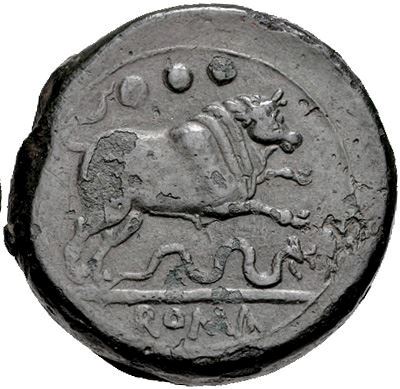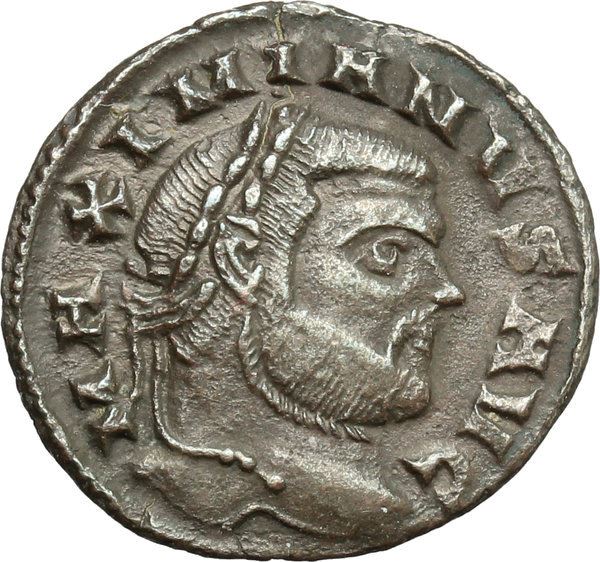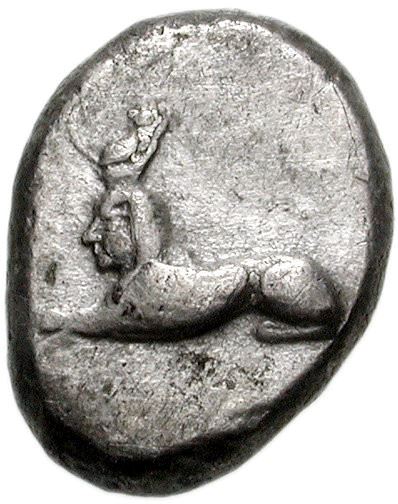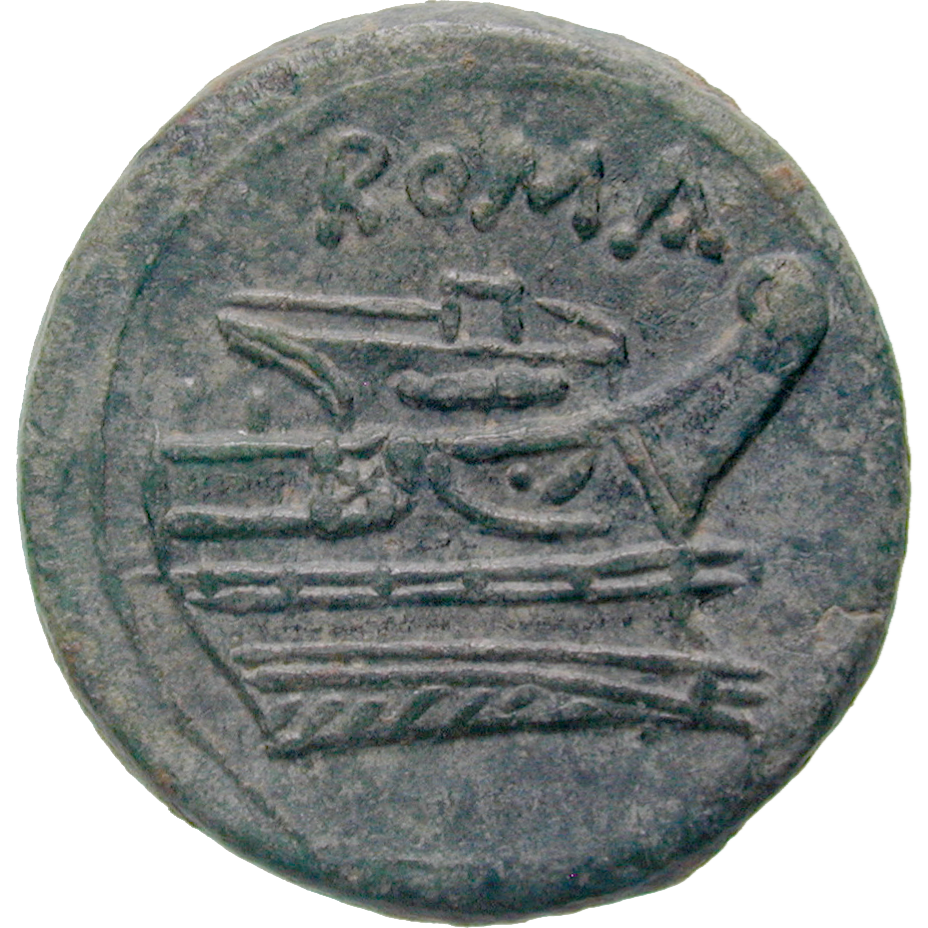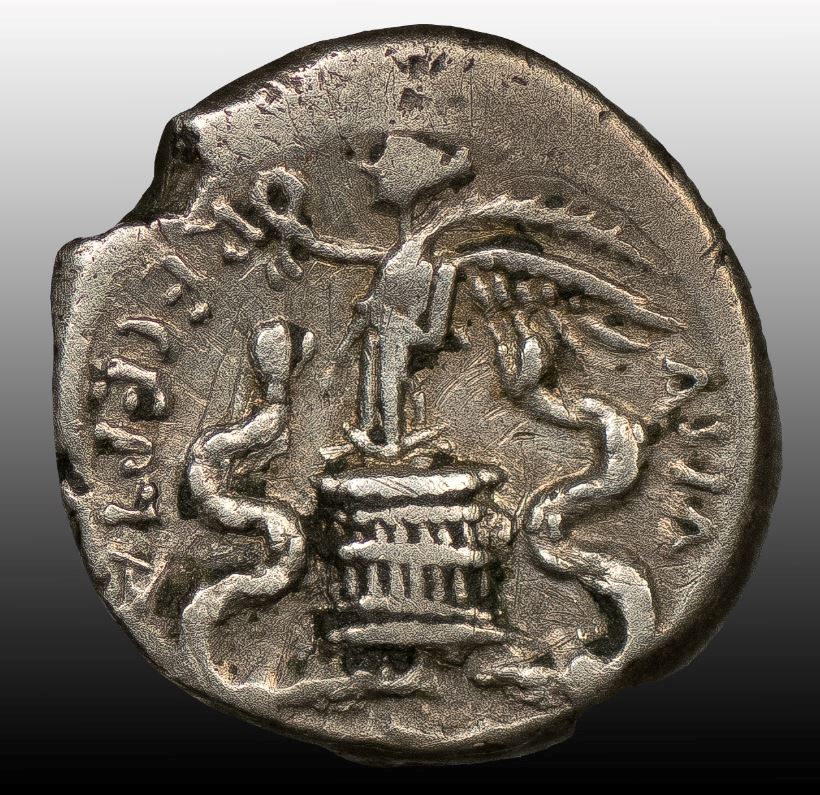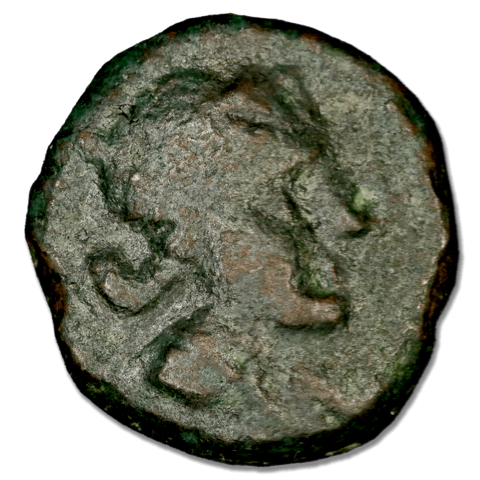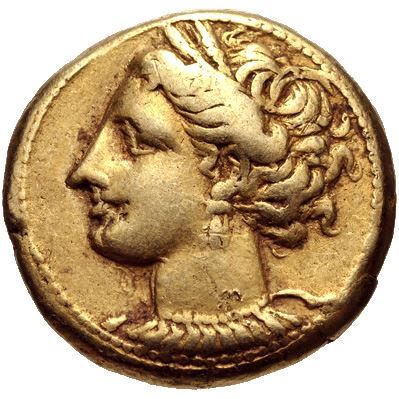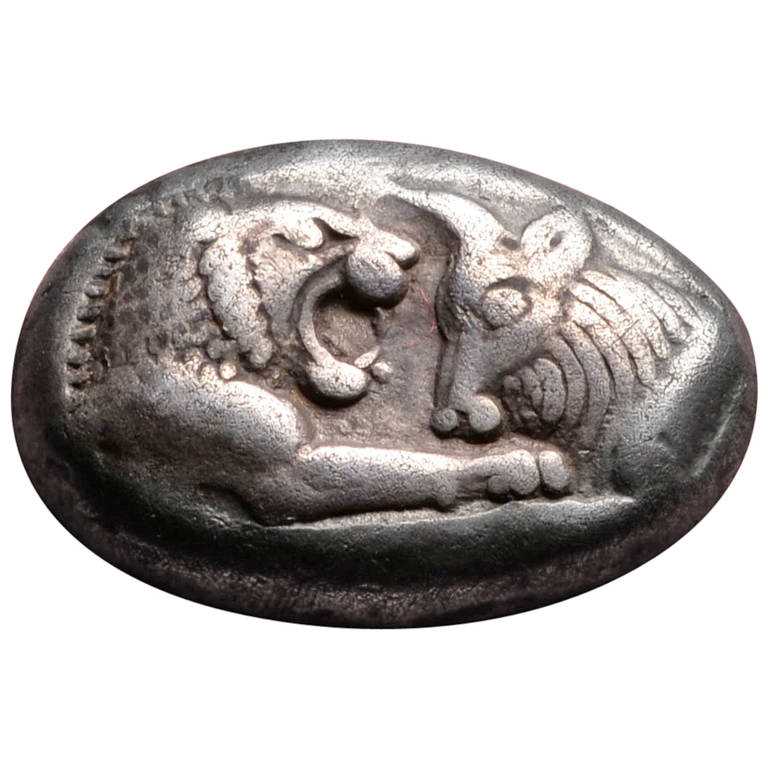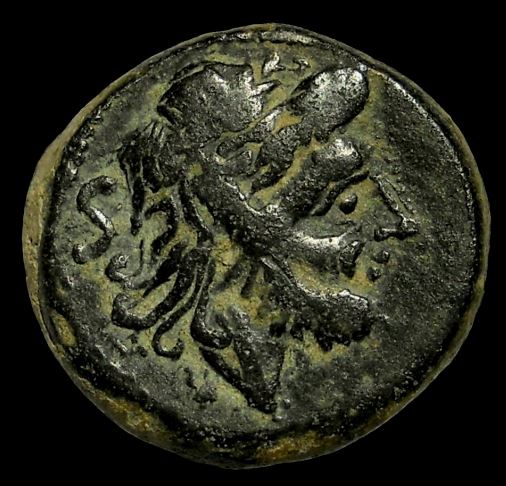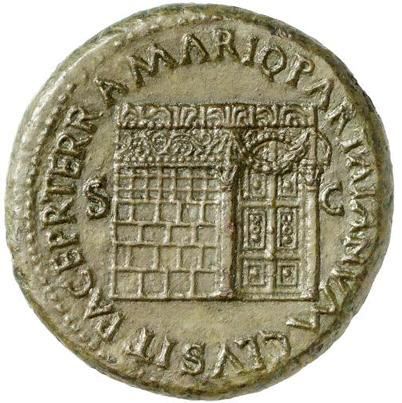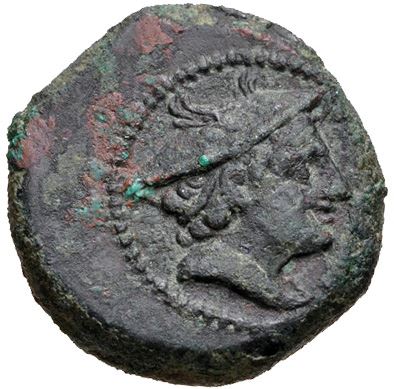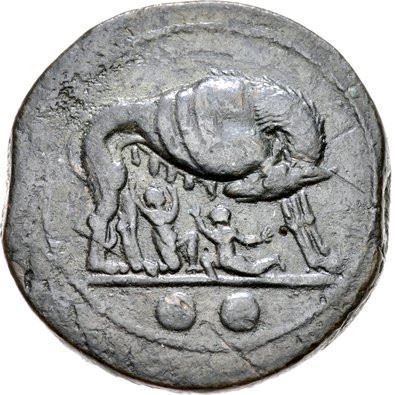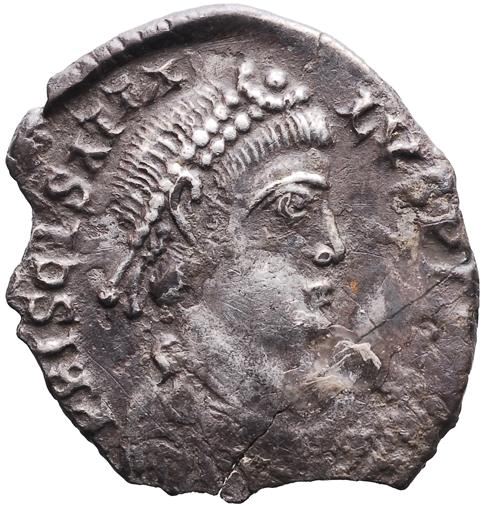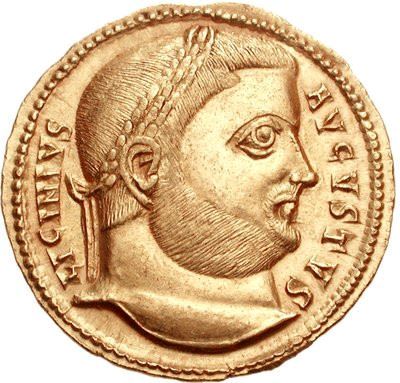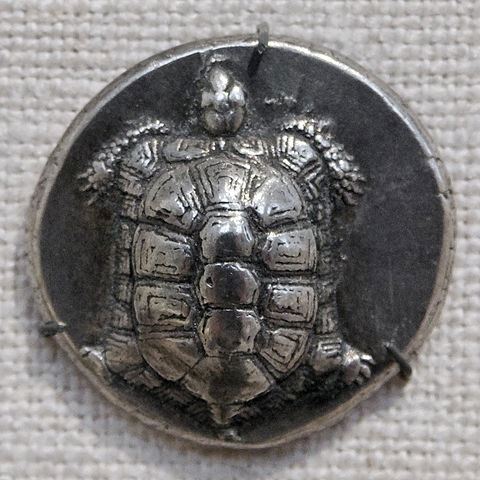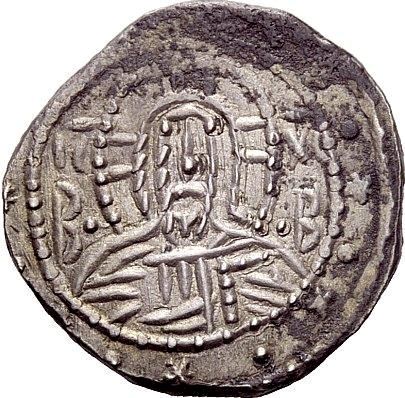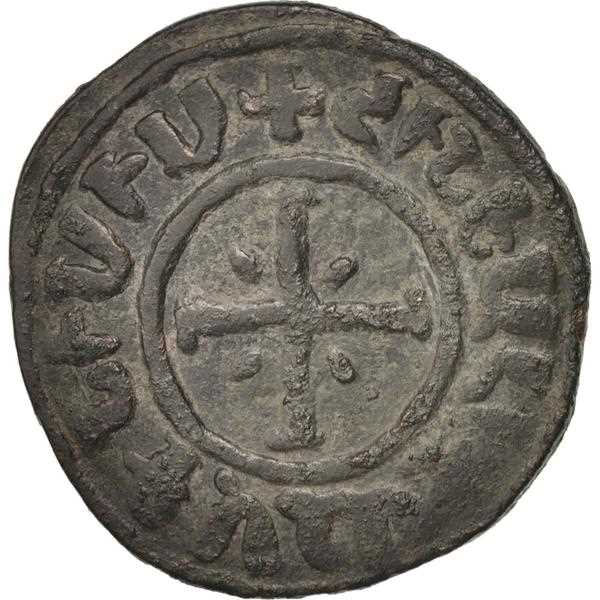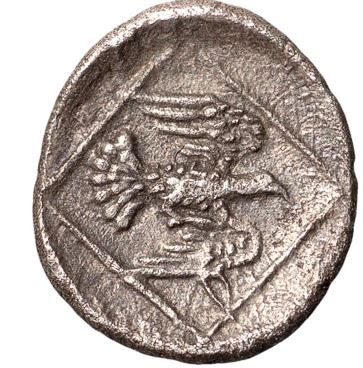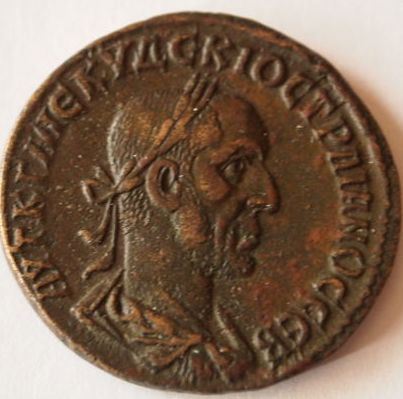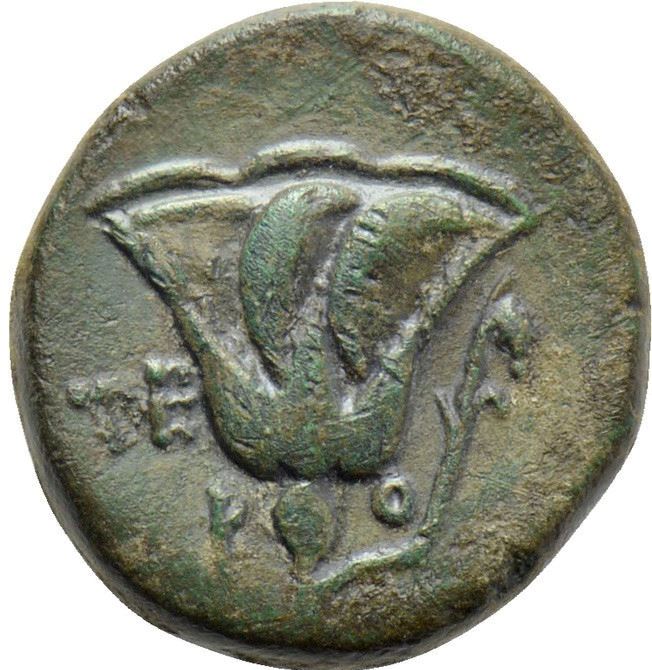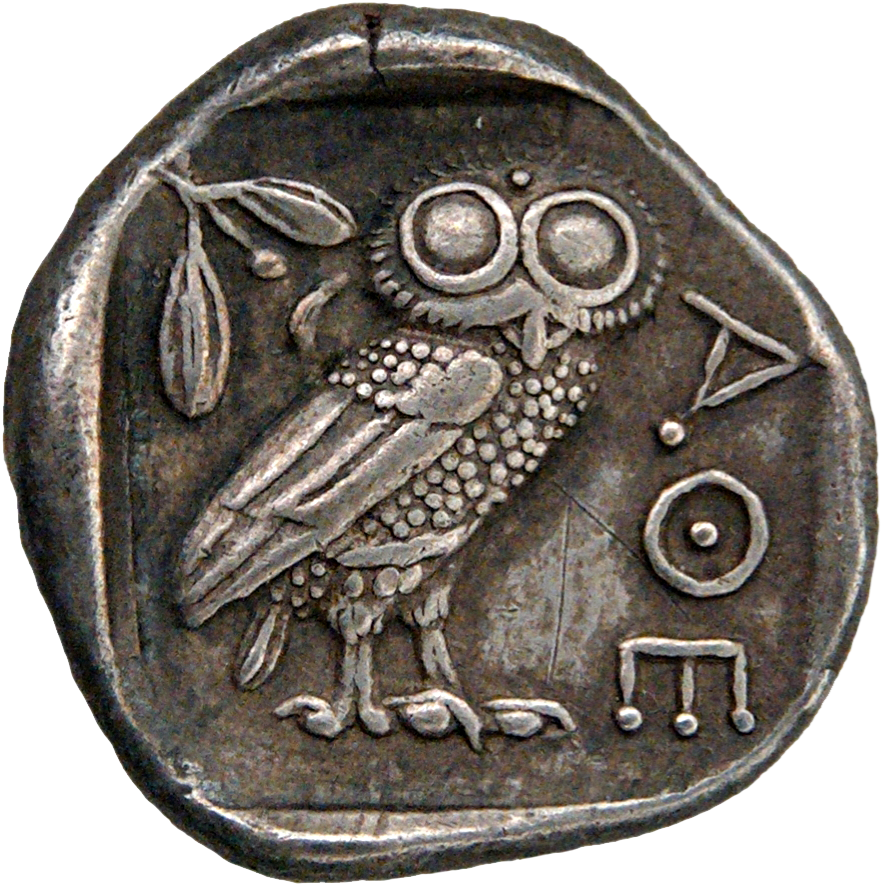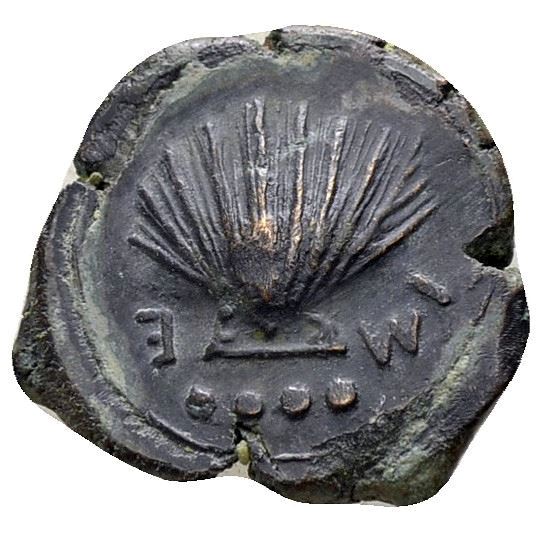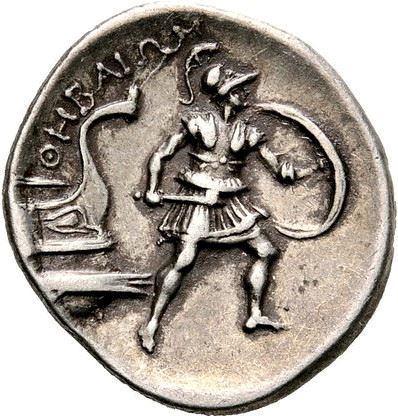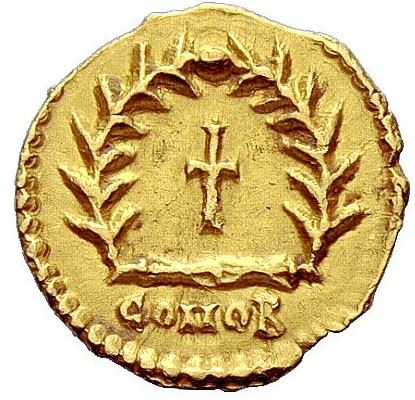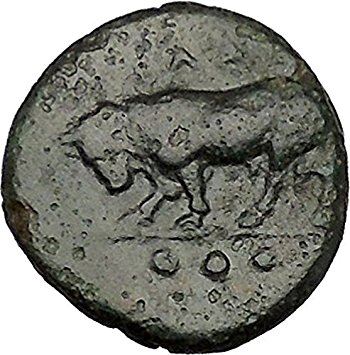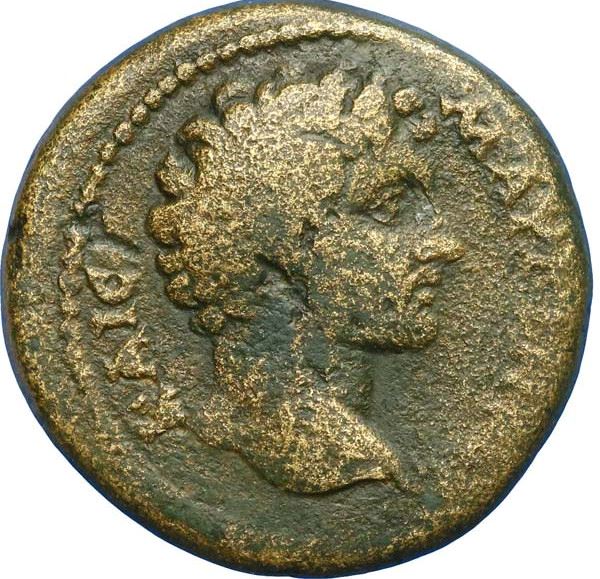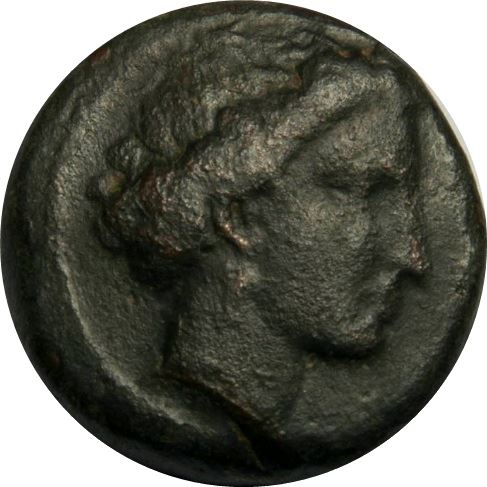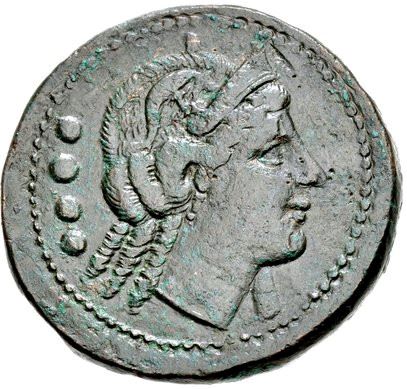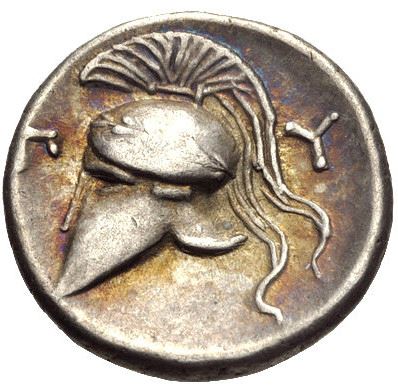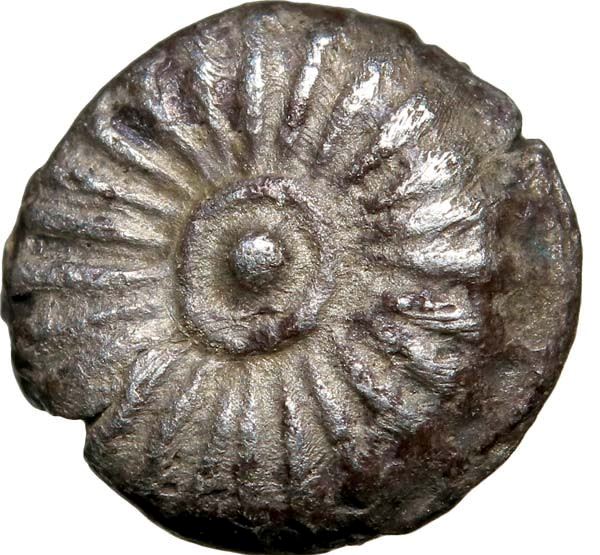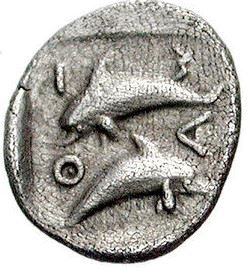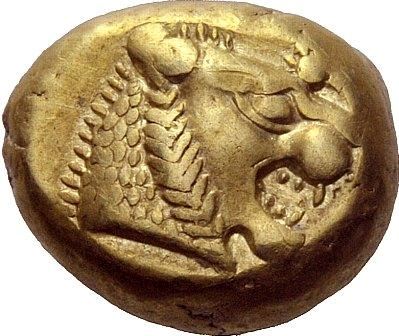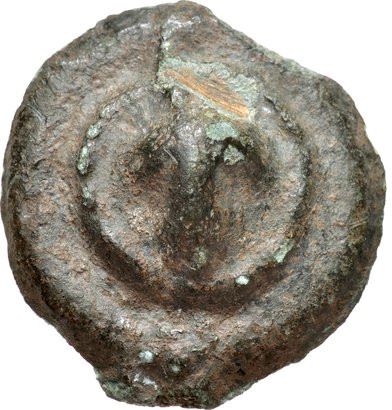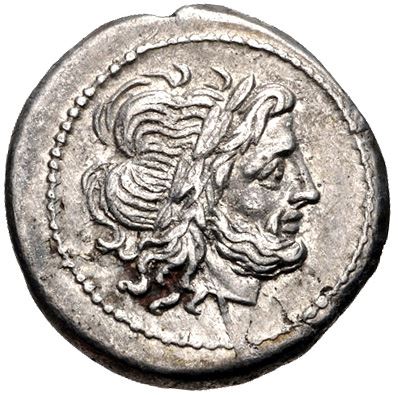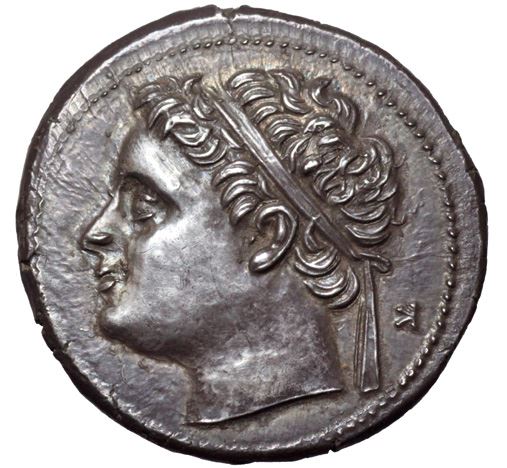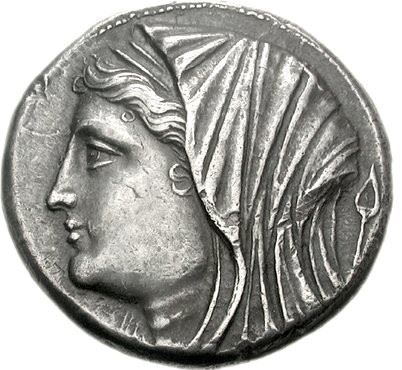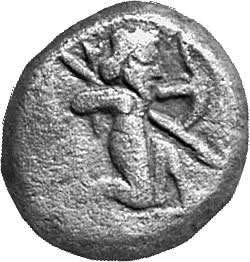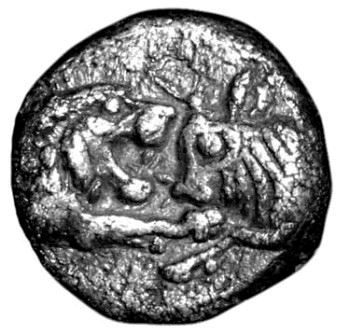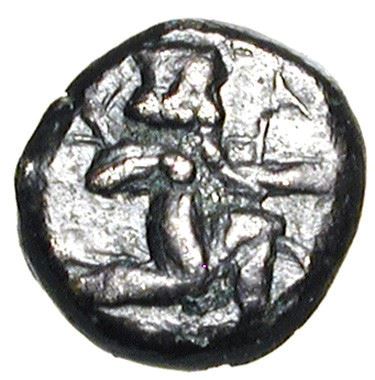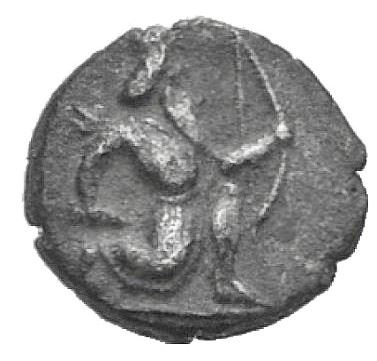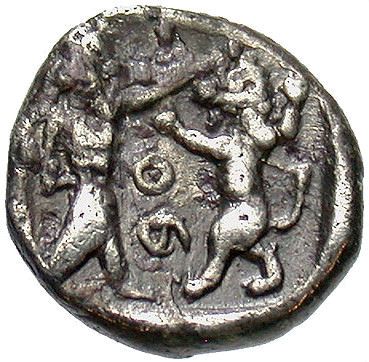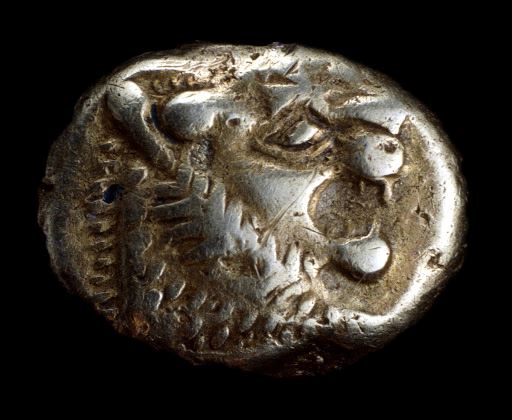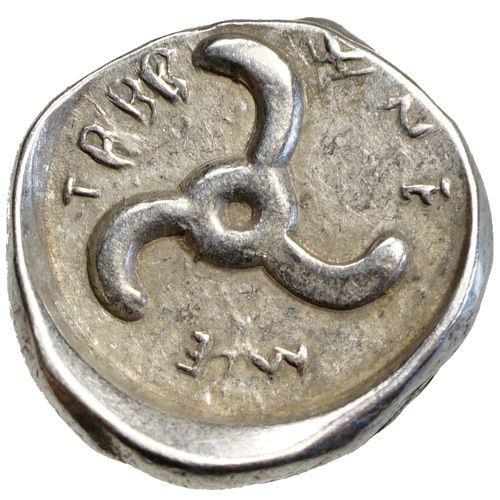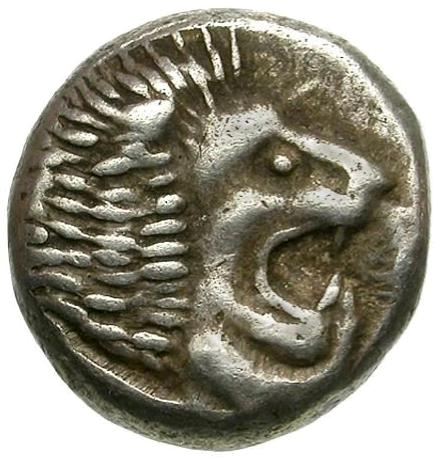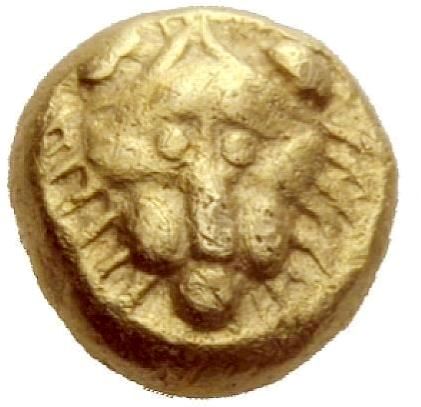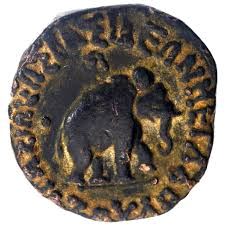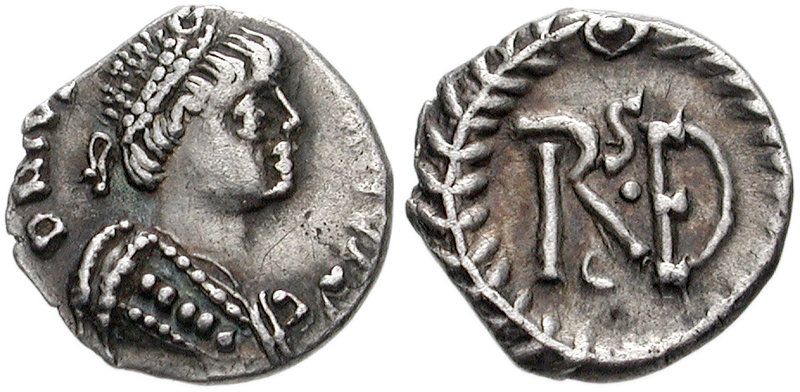Ok, so for some reason this ruler, mint, denomination or collection does not have a description yet - oops!
There are two possible explanations for this:
No description has been written yet
The property is incorrectly named
If the former, patience is key - this site covers thousands of entities, and all must have a manually created description written.
If the latter, try renaming the property - 'Domitian as Caesar' has no description, but 'Domitian' does.
There are two possible explanations for this:
If the former, patience is key - this site covers thousands of entities, and all must have a manually created description written.
If the latter, try renaming the property - 'Domitian as Caesar' has no description, but 'Domitian' does.
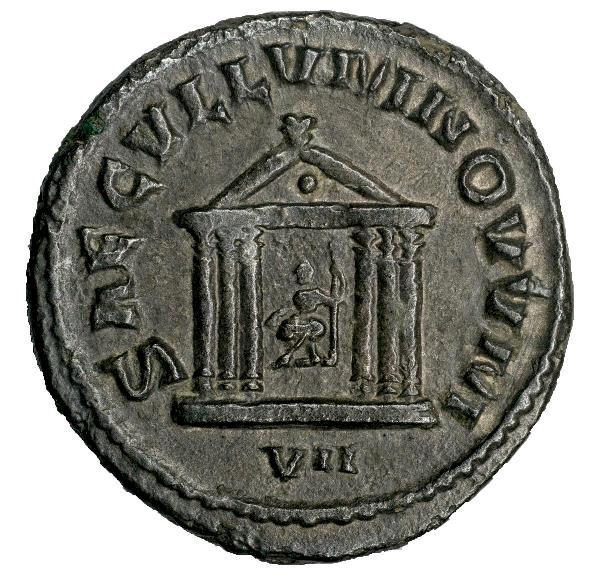
Antoninianus
The Antoninianus was a coin used during the Roman Empire thought to have been valued at 2 denarii. It was initially silver, but was slowly debased to bronze with a minimal silver content.
The coin was introduced by Caracalla in early 215, and was a silver coin similar to the denarius except that it was slightly larger and featured the emperor wearing a radiate crown, indicating that it...
The coin was introduced by Caracalla in early 215, and was a silver coin similar to the denarius except that it was slightly larger and featured the emperor wearing a radiate crown, indicating that it...
Argenteus
The argenteus was a silver coin produced by the Roman Empire from the time of Diocletian's coinage reform in AD 294 to ca. AD 310. It was of similar weight and fineness as the denarius of the time of Nero. The coin was produced at a theoretical weight of 1/96th of a Roman pound (about 3 grams), as indicated by the Roman numeral XCVI on the coin's reverse.
As
The As was a bronze, and later copper, coin used during the Roman Republic and Roman Empire.
During the Republic, the as featured the bust of Janus on the obverse, and the prow of a galley on the reverse.
Following the coinage reform of Augustus in 23 BC, the as was struck in reddish pure copper instead of bronze.
The as continued to be produced until the 3rd centu...
During the Republic, the as featured the bust of Janus on the obverse, and the prow of a galley on the reverse.
Following the coinage reform of Augustus in 23 BC, the as was struck in reddish pure copper instead of bronze.
The as continued to be produced until the 3rd centu...
Aspron|Doukatopoulon|1/8 Stavraton
The Aspron was a small silver denomination struck during the last century of the Byzantine Empire. It was valued at 1/8th of a Stavraton, a large silver coin introduced by Emperor John V Palaiologos in circa 1367.
All these coins featured a bust of Christ on the obverse and an imperial bust on the reverse. The inscriptions are fairly uniform, with the reverse featuring an inner and an o...
All these coins featured a bust of Christ on the obverse and an imperial bust on the reverse. The inscriptions are fairly uniform, with the reverse featuring an inner and an o...
Aureus
The Aureus was a gold coin of ancient Rome originally valued at 25 pure silver denarii. The aureus was regularly issued from the 1st century BC to the beginning of the 4th century AD, when it was replaced by the solidus.
It is about the same size as the denarius, but heavier due to the higher density of gold.
It is about the same size as the denarius, but heavier due to the higher density of gold.
Biunx
The biunx - two uncia - was a rarely used denomination during the Roman Republic.
It was used for both Aes Grave coinage and for struck coins.
It corresponded roughly to the sextans, which was also valued as 2 uncia, but the sextans was used when asses were valued at 12 uncia, and the biunx when assses were valued at 10 uncia.
It was used for both Aes Grave coinage and for struck coins.
It corresponded roughly to the sextans, which was also valued as 2 uncia, but the sextans was used when asses were valued at 12 uncia, and the biunx when assses were valued at 10 uncia.
Centenionalis
The bronze centenionalis was the attempt of Constans and Constantius II to reintroduce a large bronze coin between 320 and 340 AD, as the follis had by then shrunk dramatically.
The type of coin it was is uncertain, but numismatists have categorized large bronze coins of the above date under this denomination.
The centenionalis did not last long. By the end of Theodosius the...
The type of coin it was is uncertain, but numismatists have categorized large bronze coins of the above date under this denomination.
The centenionalis did not last long. By the end of Theodosius the...
Chalkous
The chalkous (plural: chalkoi) was an ancient Greek bronze coin denomination. The chalkous was the smallest fraction of a coin in Greek poleis, but the weight varied. In Athens one obolos equalled 8 , in Delphi and Epidaurus 12 , and in Priene 16 chalkoi.
Other denominations based on the Chalkous were struck, e.g. the tetrachalkon, the dichalkon, and the hemichalkon.
Other denominations based on the Chalkous were struck, e.g. the tetrachalkon, the dichalkon, and the hemichalkon.
Cistophorus
The cistophorus was a coin of ancient Pergamum. It was introduced sometime in the years 175–160 BC at that city to provide the Attalid kingdom with a substitute for Seleucid coins and the tetradrachms of Philetairos. It was also used by a number of other cities that were under Attalid control, including Alabanda and Kibyra.
It continued to be minted and circulated down to the time of Ha...
It continued to be minted and circulated down to the time of Ha...
Dekadrachm
The dekadrachm - literally 10 drachms - was an ancient Attic Greek silver coin denomination weighing around 43 grammes.
I was valued at 10 drachms, which is equivalent to 2½ tetradrahms - or 60 obols.
They are amongst the largest, most beautiful, and priciest ancient coins on the market, and so are also often a target for counterfeiters.
I was valued at 10 drachms, which is equivalent to 2½ tetradrahms - or 60 obols.
They are amongst the largest, most beautiful, and priciest ancient coins on the market, and so are also often a target for counterfeiters.
Decassarion
The decassarion was a bronze denomination worth 10 asses - assarion in Greek.
It was commonly struck by Roman Provincial mints, and was not struck to a standard weight but rather to some local standard. It was simply a coin worth 10 of the local basic coin denomination.
It was commonly struck by Roman Provincial mints, and was not struck to a standard weight but rather to some local standard. It was simply a coin worth 10 of the local basic coin denomination.
Denarius|Denarius Serratus
The denarius was a small silver coin first minted about 211 BC during the Second Punic War. It became the most common coin produced for circulation but was slowly debased in weight and silver content until its replacement by the double denarius, called the antoninianus, early in the 3rd century AD. From the late 2nd to early 1st century BC, the regular Denarius denomination was occasionally struc...
Denier
The denier was a medieval denomination named after the earlier denarius. It was originally a Frankish coin first issued in the late seventh century. In English it is sometimes referred to as a silver penny.
Its appearance represents the end of gold coinage, which, at the start of Frankish rule, had either been Byzantine or pseudo-imperial. Silver would be the basis for Frankish coinag...
Its appearance represents the end of gold coinage, which, at the start of Frankish rule, had either been Byzantine or pseudo-imperial. Silver would be the basis for Frankish coinag...
Diassarion
The diassarion was a bronze denomination worth 2 asses - assarion in Greek.
It was commonly struck by Roman Provincial mints, and was not struck to a standard weight but rather to some local standard. It was simply a coin worth 2 of the local basic coin denomination.
It was commonly struck by Roman Provincial mints, and was not struck to a standard weight but rather to some local standard. It was simply a coin worth 2 of the local basic coin denomination.
Dinar
The Dinar was an Islamic medieval gold coin first issued in 696–697 AD by Caliph Abd al-Malik ibn Marwan. The weight of the dinar is 1 mithqal, which equals 4.25 grams.
The word dinar comes from the Latin denarius, which was a silver coin. The name "dinar" is also used for Sasanid, Kushan, and Kidarite gold coints, though it is not known what the contemporary name was.
Early ...
The word dinar comes from the Latin denarius, which was a silver coin. The name "dinar" is also used for Sasanid, Kushan, and Kidarite gold coints, though it is not known what the contemporary name was.
Early ...
Dirham|Dirhem
Dirham is the name given to a number of fractional silver coins produced in Islamic countries at different times.
The word "dirhem" comes from drachma (δραχμή), the Greek denomination which circulated in the Levant and beyond both before and after the Arab conquest.
Near the end of the 7th century the coin became an Islamic currency bearing the name of the sovereign and a re...
The word "dirhem" comes from drachma (δραχμή), the Greek denomination which circulated in the Levant and beyond both before and after the Arab conquest.
Near the end of the 7th century the coin became an Islamic currency bearing the name of the sovereign and a re...
Dodrans
The dodrans (Latin: lit. nine-twelfths) was an Ancient Roman bronze coin produced during the Roman Republic.
The dodrans, valued at three-fourths of an as (9 unciae), was produced only twice; In 126 BC by C. Cassius, in combination with the bes, another very rare denomination which was valued at two-thirds of an as, and in the 2nd century BC by M. Caecilius Metellus Q. f. (perhaps Marcu...
The dodrans, valued at three-fourths of an as (9 unciae), was produced only twice; In 126 BC by C. Cassius, in combination with the bes, another very rare denomination which was valued at two-thirds of an as, and in the 2nd century BC by M. Caecilius Metellus Q. f. (perhaps Marcu...
Drachm|Plinthophoric Drachm
The Drachm (meaning 'handful') was the standard unit of silver coinage at most ancient Greek mints.
While a drachm was always divided into 6 obols, the actual weight was dependent on the standard used. Under the attic standard, a drachm weighed 4,3 grams, under the Corinthian standard 2,9 grams, and the Aeginan standard defined it as 6,1 grams. And that's only three of them.
...
While a drachm was always divided into 6 obols, the actual weight was dependent on the standard used. Under the attic standard, a drachm weighed 4,3 grams, under the Corinthian standard 2,9 grams, and the Aeginan standard defined it as 6,1 grams. And that's only three of them.
...
Dupondius
The dupondius (Latin two-pounder) was a brass coin used during the Roman Empire and Roman Republic valued at 2 aes (1/2 of a sestertius or 1/8 of a denarius).
The dupondius was introduced during the Roman Republic as a large bronze cast coin, although even at introduction it weighed less than 2 pounds. The initial coins featured the bust of Roma on the obverse and a six-spoked wheel on ...
The dupondius was introduced during the Roman Republic as a large bronze cast coin, although even at introduction it weighed less than 2 pounds. The initial coins featured the bust of Roma on the obverse and a six-spoked wheel on ...
Eikosachalkon
The Eikosachalkon was a Ptolemaic bronze denomination worth 20 chalkous. It is expected to weigh ~28.5 grammes.
It is a fairly new denomination discovered through metrological analysis, and coins of this denomination are sometimes referred to as lightweight tetrobols.
It is a fairly new denomination discovered through metrological analysis, and coins of this denomination are sometimes referred to as lightweight tetrobols.
Follis
The follis was originally a large bronze coin with around 5% silver content introduced at the time of the coinage reform of Diocletian. It weighed about 10 grams.
Due to rampant inflation, the follis was quickly reduced in weight and by the time of Constantine it was a shadow of its former self and barely contained any silver at all.
The follis was reintroduced as a large bro...
Due to rampant inflation, the follis was quickly reduced in weight and by the time of Constantine it was a shadow of its former self and barely contained any silver at all.
The follis was reintroduced as a large bro...
Gros
The Gros was a medieval silver denomination originally struck in France, but also by some Crusader states. Though the names are related, it is larger than the German 'Groschen'.
The original gros created by Louis IX weighed about 4.52 g of nearly pure silver, and was valued at one sou, that is 12 deniers or 1/20 of a livre tournois. Unlike the gold écu that was minted in small numbers, ...
The original gros created by Louis IX weighed about 4.52 g of nearly pure silver, and was valued at one sou, that is 12 deniers or 1/20 of a livre tournois. Unlike the gold écu that was minted in small numbers, ...
Half-Centenionalis
The half centenionalis is the smaller counterpart to the centenionalis, which was the attempt of Constans and Constantius II to reintroduce a large bronze coin between 320 and 340 AD, as the follis had by then shrunk dramatically.
Neither the centenionalis nor the half centenionalis lasted very long. By the end of Theodosius the Great's rule, only smaller varieties of bronze coins were ...
Neither the centenionalis nor the half centenionalis lasted very long. By the end of Theodosius the Great's rule, only smaller varieties of bronze coins were ...
Half-Follis
The half-Follis was a Roman Imperial and Byzantine denomination valued at, well, half a follis.
It was struck only infrequently, mostly in the years the Diocletian coin reform in 294 AD and before the shrinking follis made the half-follis impractical.
When the Follis was reintroduced by Anastasius in 498, the half-follis was also reintroduced. It was valued at 20 nummi and m...
It was struck only infrequently, mostly in the years the Diocletian coin reform in 294 AD and before the shrinking follis made the half-follis impractical.
When the Follis was reintroduced by Anastasius in 498, the half-follis was also reintroduced. It was valued at 20 nummi and m...
Half-Maiorina
A billon coin replacing the heavily reduced centenionalis introduced by Constantius II and Constans in AD 348.
The half maiorina weighed 2,6 grams initially, but like its big brother the maiorina it was quickly heavily reduced.
The half maiorina weighed 2,6 grams initially, but like its big brother the maiorina it was quickly heavily reduced.
Half-Shekel
The Shekel was a denomination weighing about 8.6 grammes and mainly used by the Phoenician - or Punic - city states and in Judea.
In the New Testament, Tyrian Shekels are hypothesized to be the infamous '30 pieces of silver' given by the Romans to Judas.
Shekels were also struck in gold, but obviously to a different weight standard. Fractional shekels were also struck.
In the New Testament, Tyrian Shekels are hypothesized to be the infamous '30 pieces of silver' given by the Romans to Judas.
Shekels were also struck in gold, but obviously to a different weight standard. Fractional shekels were also struck.
Half-Siliqua
Siliqua is the modern name given (without any ancient evidence) to small, thin, Roman silver coins produced in the 4th century A.D. and later.
Correspondingly, the half-siliqua is a coin weighing half of what the siliqua weighed.
When the coins were in circulation, the Latin word siliqua was a unit of weight defined as one twenty-fourth of the weight of a Roman solidus.
Correspondingly, the half-siliqua is a coin weighing half of what the siliqua weighed.
When the coins were in circulation, the Latin word siliqua was a unit of weight defined as one twenty-fourth of the weight of a Roman solidus.
Half-Stater
The half-stater was an ancient denomination worth half of a stater. It was struck in both gold and silver.
SIlver coins struck under Croesus with an approximate weight of 5g are typically referred to as both half-staters and as sigloi.
As a gold denomination, it is used for coins with an approximate weight of 4.25g, often struck in by Celtic tribes or in Calabria or Macedon.
SIlver coins struck under Croesus with an approximate weight of 5g are typically referred to as both half-staters and as sigloi.
As a gold denomination, it is used for coins with an approximate weight of 4.25g, often struck in by Celtic tribes or in Calabria or Macedon.
Half-Stavraton
The Stavraton was a type of silver coin used during the last century of the Byzantine Empire. They were large silver coins introduced by Emperor John V Palaiologos in circa 1367 and used for the last century of Byzantine history.
Fractions were also struck - the Half-Stavraton initially weighed 4.4 grams and gradually declined to 3.7; the one-eighth, known as the doukatopoulon or aspron...
Fractions were also struck - the Half-Stavraton initially weighed 4.4 grams and gradually declined to 3.7; the one-eighth, known as the doukatopoulon or aspron...
Hekte
The Hekte - or sixth-stater - is an ancient Lydian coin denomination which was struck in electrum.
The Hekte is common enough, but seen less often than the larger trite, though also typically less expensive because of the smaller size.
Lydian Hektes featured a lions head, but hektes from Greek cities have a wider variety of imagery.
The Hekte is common enough, but seen less often than the larger trite, though also typically less expensive because of the smaller size.
Lydian Hektes featured a lions head, but hektes from Greek cities have a wider variety of imagery.
Hemiassarion
The hemiassarion was a bronze denomination worth ½ as - assarion in Greek.
It was commonly struck by Roman Provincial mints, and was not struck to a standard weight but rather to some local standard. It was simply a coin worth ½ of the local basic coin denomination.
It was commonly struck by Roman Provincial mints, and was not struck to a standard weight but rather to some local standard. It was simply a coin worth ½ of the local basic coin denomination.
Hemidrachm|Triobol
The Hemidrachm was an ancient Greek coin denomination with a value of 3 obols, which is half a drachm. it is also often called a triobol.
The hemidrachm generally weighs around 2.15 grams when struck in silver, but was also struck in bronze.
The hemidrachm generally weighs around 2.15 grams when struck in silver, but was also struck in bronze.
Hemilitron|Half-Litra
The Hemilitron was an ancient Greek denomination in the Sicilian Litra system corresponding to half a Litra - or six onkia. It was struck in both bronze and silver, and is typically characterized by six pellets on the reverse design.
Some Roman republican bronzes are also referred to as hemilitrons - what they were known as historically is unknown.
Some Roman republican bronzes are also referred to as hemilitrons - what they were known as historically is unknown.
Hemitetartemorion
The hemitetartemorion is a tiny Greek denomination worth half a tetartemorion - equivalent to 1/8th of an obol.
It weighs 0.09 grammes, and usually measures 3-5mm in diameter.
It was the smallest Greek denomination, and was equivalent to 1/48th of a days wage. It was very infrequently struck.
It weighs 0.09 grammes, and usually measures 3-5mm in diameter.
It was the smallest Greek denomination, and was equivalent to 1/48th of a days wage. It was very infrequently struck.
Hexassarion
The hexassarion was a bronze denomination worth 6 asses - assarion in Greek.
It was commonly struck by Roman Provincial mints, and was not struck to a standard weight but rather to some local standard. It was simply a coin worth 6 of the local basic coin denomination.
It was commonly struck by Roman Provincial mints, and was not struck to a standard weight but rather to some local standard. It was simply a coin worth 6 of the local basic coin denomination.
Jital
The Jital was a copper or billon coin first struck in the Delhi Sultanate by Iltutmish. It contained 3.6 grains of silver, and replaced the dihliwal which had higher silver content - and so the introduction effectively constituted a devaluation of the monetary system.
The Jital originally derived from the Bull and horseman coins of the Shahi of Kabul. These were silver, with a weight st...
The Jital originally derived from the Bull and horseman coins of the Shahi of Kabul. These were silver, with a weight st...
Lepton
Lepton is the name of various fractional units of currency used in the Greek-speaking world from antiquity until today. The word means "small" or "thin", and during Classical and Hellenistic times a lepton was always a small value coin, usually the smallest available denomination of another currency.
The coin in the lesson of the widow's mite is referred to as a lepton and Luke's Gospel...
The coin in the lesson of the widow's mite is referred to as a lepton and Luke's Gospel...
Maiorina|Double Maiorina
The Maiorina was a billon coin replacing the heavily reduced centenionalis introduced by Constantius II and Constans in AD 348.
It was struck on two weight standards - 5,2 and 4,5 grams. By the end of Constantius' reign in AD 361, this coin too had been reduced to a mere 1,9 grams.
The heavier issues by the western usurper Magnentius and his cousing Decentius are sometimes re...
It was struck on two weight standards - 5,2 and 4,5 grams. By the end of Constantius' reign in AD 361, this coin too had been reduced to a mere 1,9 grams.
The heavier issues by the western usurper Magnentius and his cousing Decentius are sometimes re...
Miliarense|Light miliarense
The Miliarense was a large silver coin, introduced to the late Roman monetary system in the early 4th century. It was struck with variable fineness, generally with a weight between 3.8 and 6.0 grams, and a diameter of c. 23–24 mm.
The miliarense was struck first under Constantine the Great (r. 306–337). There were two kinds of miliarense coins: light and heavy. It took 14 heavy miliare...
The miliarense was struck first under Constantine the Great (r. 306–337). There were two kinds of miliarense coins: light and heavy. It took 14 heavy miliare...
Nummus
The nummus was a diminutive denomination introduced around 379 AD. It measured less than 17 mm, and weighed around 1 gram. The name nummus is almost certainly a misattribution, as recent evidence suggests that what we call a 'follis' was actually referred to as a 'nummus'.
As the disastrous 5th Century progressed, the "nummus" was to become the only bronze denomination in circulation. ...
As the disastrous 5th Century progressed, the "nummus" was to become the only bronze denomination in circulation. ...
Octassarion
The octassarion was a bronze denomination worth 8 asses - assarion in Greek.
It was commonly struck by Roman Provincial mints, and was not struck to a standard weight but rather to some local standard. It was simply a coin worth 8 of the local basic coin denomination.
It was commonly struck by Roman Provincial mints, and was not struck to a standard weight but rather to some local standard. It was simply a coin worth 8 of the local basic coin denomination.
Octobol
The octobol - eight obols - was an ancient Greek denomination struck in both silver and bronze.
The huge Ptolemaic bronze issue weighs between 80 and 96 grams, and some scholars prefer to regard these as heavy bronze drachms (usually 60-75 grams), but we follow the classification of Catherine Lorber (2011).
In silver, the octobol usually weighs between 4.5 and 5.5 grammes, d...
The huge Ptolemaic bronze issue weighs between 80 and 96 grams, and some scholars prefer to regard these as heavy bronze drachms (usually 60-75 grams), but we follow the classification of Catherine Lorber (2011).
In silver, the octobol usually weighs between 4.5 and 5.5 grammes, d...
Octolitron|8 Litrai
The 8 litra coin was a silver coin in the Sicilian Litra system.
It weighed around 6.8 grammes.
It weighed around 6.8 grammes.
Onkia
The Onkia is an ancient Greek denomination based on the Sicilian standard. In silver it weighs 0.07 grammes - but it was (exclusively?) struck in base metal.
The Onkia was worth 1/12th of a Litra, another Sicilian denomination, and has given name to the Roman Uncia, the Ounce, and the Inch, which are all 1/12ths of something.
The Onkia was worth 1/12th of a Litra, another Sicilian denomination, and has given name to the Roman Uncia, the Ounce, and the Inch, which are all 1/12ths of something.
Penny|Short-cross penny|Long-cross penny
The Penny was originally an anglo-saxon coin denomination introduced by King Offa of Mercia ~785 AD. With a weight of 1.3-1.5g, they were similar in size and weight to the continental 'denier' and anglo-saxon 'sceat'.
Throughout the period of the Kingdom of England, from its beginnings in the 9th century, the penny was produced in silver. Pennies of the same nominal value, one 240th of ...
Throughout the period of the Kingdom of England, from its beginnings in the 9th century, the penny was produced in silver. Pennies of the same nominal value, one 240th of ...
Pentassarion
The pentassarion was a bronze denomination worth 5 asses - assarion in Greek.
It was commonly struck by Roman Provincial mints, and was not struck to a standard weight but rather to some local standard. It was simply a coin worth 5 of the local basic coin denomination.
The pentassarion was commonly marked with an E or epsilon on the revserse denoting '5'.
It was commonly struck by Roman Provincial mints, and was not struck to a standard weight but rather to some local standard. It was simply a coin worth 5 of the local basic coin denomination.
The pentassarion was commonly marked with an E or epsilon on the revserse denoting '5'.
Pentalitron|5 Litrai
The 5 litra coin - or pentalitron - was a silver coin in the Sicilian Litra system.
It weighed around 4 grammes and was roughly corresponding to an Attic drachm.
It weighed around 4 grammes and was roughly corresponding to an Attic drachm.
Pentonkion
The Pentonkion was a denomination within the Sicilian Greek system corresponding to 5 onkia.
The Pentonkion was denoted by five pellets on the reverse.
The Pentonkion was struck both in base metal and in silver.
The Pentonkion was denoted by five pellets on the reverse.
The Pentonkion was struck both in base metal and in silver.
Post-reform Radiate
The Post-reform Radiate (Latin name unknown) was a Roman coin denomination first issued by Diocletian during his currency reforms.
The radiate looked very similar to the Antoninianus (pre-reform radiate), with a radiate crown like Sol Invictus. The difference is the absence of the "XXI" that existed on pre-reform radiates, a symbol believed to have indicated a consistence of 20 parts b...
The radiate looked very similar to the Antoninianus (pre-reform radiate), with a radiate crown like Sol Invictus. The difference is the absence of the "XXI" that existed on pre-reform radiates, a symbol believed to have indicated a consistence of 20 parts b...
Potin
Potins are Celtic coins cast in bronze with up to 25% tin content, as well as substantial lead content. Potins were cast in all of Gaul, roughly modern-day France and Belgium, as well as some tribes in Britain.
Potins often look fairly crude and worn, but they are often in 'as cast' condition. They all but disappeared after the Roman conquest, when they were replaced by Roman coinage.
Potins often look fairly crude and worn, but they are often in 'as cast' condition. They all but disappeared after the Roman conquest, when they were replaced by Roman coinage.
Prutah
The prutah was an ancient copper Jewish coin with low value. A loaf of bread in ancient times was worth about 10 prutot (plural of prutah). One prutah was also worth two lepta (singular lepton), which was the smallest denomination minted by the Hasmonean and Herodian Dynasty kings.
Prutot were also minted by the Roman Procurators of the Province of Judea, and later were minted by the Je...
Prutot were also minted by the Roman Procurators of the Province of Judea, and later were minted by the Je...
Quadrans
The quadrans (literally meaning "a quarter") or teruncius ("three unciae") was a low-value Roman bronze coin worth one quarter of an as.
The quadrans was issued from the beginning of cast bronze coins during the Roman Republic with three pellets representing three unciae as a mark of value.
The obverse type, after some early variations, featured the bust of Hercules, while t...
The quadrans was issued from the beginning of cast bronze coins during the Roman Republic with three pellets representing three unciae as a mark of value.
The obverse type, after some early variations, featured the bust of Hercules, while t...
Quarter-follis
The quarter-follis - ancient name unknown - was a Roman bronze denomination struck ca. 294-315. It was the smallest fraction struck during the Tetrarchy.
The weights varied from slightly less than one gram to almost three grams, but most seem to be centered around one scripulum, a Roman measure of weight which equals 1.13 grams. A distinction between quarter-folles and "denarii commun...
The weights varied from slightly less than one gram to almost three grams, but most seem to be centered around one scripulum, a Roman measure of weight which equals 1.13 grams. A distinction between quarter-folles and "denarii commun...
Quarter-Maiorina
The quarter-maiorina was a fractional denomination struck in bronze rather than billon, in contrast with the half-maiorina and the maiorina.
The Maiorina was a billon coin replacing the heavily reduced centenionalis introduced by Constantius II and Constans in AD 348.
It was struck on two weight standards - 5,2 and 4,5 grams - but by the end of Constantius' reign in AD 361, t...
The Maiorina was a billon coin replacing the heavily reduced centenionalis introduced by Constantius II and Constans in AD 348.
It was struck on two weight standards - 5,2 and 4,5 grams - but by the end of Constantius' reign in AD 361, t...
Quarter-Shekel
The Shekel was a denomination weighing about 8.6 grammes and mainly used by the Phoenician - or Punic - city states and in Judea.
In the New Testament, Tyrian Shekels are hypothesized to be the infamous '30 pieces of silver' given by the Romans to Judas.
Shekels were also struck in gold, but obviously to a different weight standard.
Fractional shekels were also str...
In the New Testament, Tyrian Shekels are hypothesized to be the infamous '30 pieces of silver' given by the Romans to Judas.
Shekels were also struck in gold, but obviously to a different weight standard.
Fractional shekels were also str...
Quartuncia
The quartuncia was the smallest denomination issued during the time of the Roman Republic.
These bronze coins had a value of 1/4 uncia and were minted in low numbers only between about 222 and 200 BC.
Quartuncia showed the head of Bellona, the goddess of war. The reverse bore the typical motif for Roman bronze coins, a prora, a ship's prow.
These bronze coins had a value of 1/4 uncia and were minted in low numbers only between about 222 and 200 BC.
Quartuncia showed the head of Bellona, the goddess of war. The reverse bore the typical motif for Roman bronze coins, a prora, a ship's prow.
Quinarius
The quinarius was a small silver Roman coin valued at half a denarius.
Initially, the quinarius was struck for a few years, along with the silver sestertius, following the introduction of the denarius in 211 BC. At this time the quinarius was valued at 5 asses.
The coin was reintroduced in 101 BC as a replacement for the victoriatus, this time valued at 8 asses due to retari...
Initially, the quinarius was struck for a few years, along with the silver sestertius, following the introduction of the denarius in 211 BC. At this time the quinarius was valued at 5 asses.
The coin was reintroduced in 101 BC as a replacement for the victoriatus, this time valued at 8 asses due to retari...
Quincunx
The quincunx was an ancient Roman bronze coin produced during the Roman Republic. It was not part of the standard Roman monetary system. It was only produced during the Second Punic War (218 to 204 BC), by mints at Luceria, Teate, Larinum, and northern Apulia. A coin with the same value was minted in Capua, during the Second Punic War, after the defeat of Cannae.
The word quincunx comes...
The word quincunx comes...
Shekel
The Shekel was a denomination weighing about 8.6 grammes and mainly used by the Phoenician - or Punic - city states and in Judea.
In the New Testament, Tyrian Shekels are hypothesized to be the infamous '30 pieces of silver' given by the Romans to Judas.
Shekels were also struck in gold, but obviously to a different weight standard.
Fractional shekels were also str...
In the New Testament, Tyrian Shekels are hypothesized to be the infamous '30 pieces of silver' given by the Romans to Judas.
Shekels were also struck in gold, but obviously to a different weight standard.
Fractional shekels were also str...
Semis
The semis ('half') was a small Roman bronze coin that was valued at half an as. During the Roman Republic, the semis was distinguished by an 'S' (indicating semis) or 6 dots (indicating a theoretical weight of 6 uncia).
Some of the coins featured a bust of Saturn on the obverse, and the prow of a ship on the reverse.
Initially a cast coin, like the rest of Roman Republican b...
Some of the coins featured a bust of Saturn on the obverse, and the prow of a ship on the reverse.
Initially a cast coin, like the rest of Roman Republican b...
Sestertius
The Sestertius was an ancient Roman coin. During the Roman Republic it was a small, silver coin issued only on rare occasions. During the Roman Empire it was a large brass coin.
The name sestertius means "two and one half", referring to its nominal value of two and a half asses, a value that was useful for commerce because it was one quarter of a denarius, a coin worth ten asses. The na...
The name sestertius means "two and one half", referring to its nominal value of two and a half asses, a value that was useful for commerce because it was one quarter of a denarius, a coin worth ten asses. The na...
Semuncia
The semuncia ('half-uncia'), , was an ancient Roman bronze coin valued at one-twenty-fourth of an as produced during the Roman Republic. It was made during the beginning of Roman cast bronze coinage as the lowest valued denomination.
The most common obverse types were a head of Mercury or an acorn, and the most common reverse types were a prow or a caduceus. It was issued until ca. 210...
The most common obverse types were a head of Mercury or an acorn, and the most common reverse types were a prow or a caduceus. It was issued until ca. 210...
Sextans
The sextans was an Ancient Roman bronze coin produced during the Roman Republic valued at one-sixth of an as (2 unciae).
The most common design for the sextans was the bust of Mercury and two pellets (indicating two unciae) on the obverse and the prow of a galley on the reverse.
Earlier types depicted a scallop shell, a caduceus, or other symbols on the obverse.
The most common design for the sextans was the bust of Mercury and two pellets (indicating two unciae) on the obverse and the prow of a galley on the reverse.
Earlier types depicted a scallop shell, a caduceus, or other symbols on the obverse.
Siliqua
The siliqua is the modern name given (without any ancient evidence) to small, thin, Roman silver coins produced in the 4th century A.D. and later.
When the coins were in circulation, the Latin word siliqua was a unit of weight defined as one twenty-fourth of the weight of a Roman solidus.
When the coins were in circulation, the Latin word siliqua was a unit of weight defined as one twenty-fourth of the weight of a Roman solidus.
Solidus
The solidus was a gold coin introduced by Diocletian in ad 301 as a replacement of the aureus. It was composed of relatively solid gold and minted 60 to the Roman pound. His minting was on a small scale, however, and the coin only entered widespread circulation under Constantine I after ad 312, when it permanently replaced the aureus.
The solidus was maintained essentially unaltered in ...
The solidus was maintained essentially unaltered in ...
Stater
The Stater was an ancient Greek or Lydian denomination, which circulated from the 8th century BC to AD 50. It was also struck in gold by Celtic tribes.
The silver staters minted at Corinth weighed 8.6 grammes, and was divided into three silver drachmae of 2.9 g. It was roughly equivalent to the Athenian didrachm, which weighed 8.6 g.
Apart from the Corinthian stater, one of t...
The silver staters minted at Corinth weighed 8.6 grammes, and was divided into three silver drachmae of 2.9 g. It was roughly equivalent to the Athenian didrachm, which weighed 8.6 g.
Apart from the Corinthian stater, one of t...
Stavraton
The Stavraton was a type of silver coin used during the last century of the Byzantine Empire. They were large silver coins introduced by Emperor John V Palaiologos in circa 1367 and used for the last century of Byzantine history.
The coin was designed to replace the defunct gold hyperpyron as the highest-denomination coin in circulation. Hence it was made heavier than any previous Byzan...
The coin was designed to replace the defunct gold hyperpyron as the highest-denomination coin in circulation. Hence it was made heavier than any previous Byzan...
Tetartemorion
A tetartemorion is an ancient Greek denomination worth 1/4 obols, and weighing 0.18 grammes.
The name comes from 'tetarton', meaning a fourth, and 'morion' meaning part - a "quarter-part".
The name comes from 'tetarton', meaning a fourth, and 'morion' meaning part - a "quarter-part".
Tetrassarion
The tetrassarion was a bronze denomination worth 4 asses - assarion in Greek.
It was commonly struck by Roman Provincial mints, and was not struck to a standard weight but rather to some local standard. It was simply a coin worth 4 of the local basic coin denomination.
It was commonly struck by Roman Provincial mints, and was not struck to a standard weight but rather to some local standard. It was simply a coin worth 4 of the local basic coin denomination.
Tetrachalkon
The tetrachalkon is an ancient Greek bronze denomination worth 4 chalkoi.
It is roughly equivalent to one hemiobol - or 1/12th of a drachm.
It is roughly equivalent to one hemiobol - or 1/12th of a drachm.
Tetradrachm
A tetradrachm is an ancient greek coin denomination worth four drachms - 24 obols - and weighing around 17.5 grammes Attic standard or 15.6 grammes Rhodian standard.
Tetradrachms on the Attic standard became the de-facto standard for trade and for large payments, and the denomination was used well into Roman times.
The most famous tetradrachm is the Athenian 'Owl'. In Roman ...
Tetradrachms on the Attic standard became the de-facto standard for trade and for large payments, and the denomination was used well into Roman times.
The most famous tetradrachm is the Athenian 'Owl'. In Roman ...
Tremissis
The tremissis or tremis was a small solid gold coin of Late Antiquity.
Its name, meaning "a third of a unit", formed by analogy with semissis (half of a unit), indicated its value relative to the solidus.
It was introduced into Roman currency in the 380s by the Emperor Theodosius I and initially weighed 8 siliquae (equivalent to 1.52 grams).
Its name, meaning "a third of a unit", formed by analogy with semissis (half of a unit), indicated its value relative to the solidus.
It was introduced into Roman currency in the 380s by the Emperor Theodosius I and initially weighed 8 siliquae (equivalent to 1.52 grams).
Triassarion
The triassarion was a bronze denomination worth 3 asses - assarion in Greek.
It was commonly struck by Roman Provincial mints, and was not struck to a standard weight but rather to some local standard. It was simply a coin worth 3 of the local basic coin denomination.
It was commonly struck by Roman Provincial mints, and was not struck to a standard weight but rather to some local standard. It was simply a coin worth 3 of the local basic coin denomination.
Trichalkon
The trichalkon was an ancient Greek bronze denomination worth 3 chalkoi.
Since the numbe of chalkons to an obol varied across regions a general weight is impossible to define, except that it weighed three chalkoi from the region it was struck in..
Since the numbe of chalkons to an obol varied across regions a general weight is impossible to define, except that it weighed three chalkoi from the region it was struck in..
Triens
The triens (plural trientes) was an Ancient Roman bronze coin produced during the Roman Republic valued at one-third of an as (4 unciae).
The most common design for the triens featured the bust of Minerva and four pellets (indicating four unciae) on the obverse and the prow of a galley on the reverse. It was not a common denomination and was last struck c. 89 BC.
The most common design for the triens featured the bust of Minerva and four pellets (indicating four unciae) on the obverse and the prow of a galley on the reverse. It was not a common denomination and was last struck c. 89 BC.
Trihemiobol
An ancient Greek denomination with a value of 1 1/2 obols or 1/4 drachm. The name means 'three half obols'.
It weighed around 1.07 grammes.
It weighed around 1.07 grammes.
Trihemitartemorion
The trihemitartemorion is an ancient Greek denomination worth 1½ tartemorions, 3/8 obol, or 3/48 drachm.
If this seems like a weird standard, it's because it was actually half a tritartemorion. The name literally means 'half three-quarters-part'.
It weighs roughly 0.27 grammes.
If this seems like a weird standard, it's because it was actually half a tritartemorion. The name literally means 'half three-quarters-part'.
It weighs roughly 0.27 grammes.
Tritartemorion
The tritartemorion was an ancient greek coin denomination worth 3 tartemoria - and weighing roughly 0.54 grammes.
The name comes from 'tetarton', meaning a fourth, and 'morion' meaning part. So it is literally a 'three-quarters-part'.
The name comes from 'tetarton', meaning a fourth, and 'morion' meaning part. So it is literally a 'three-quarters-part'.
Trite
A Trite - or third-stater - was a coin denomination in ancient Lydia, typically struck in electrum.
It was the most common Lydian denomination of its time, and may have been worth about a month's subsistence.
The punch usually consists of two squares that are joined or separate, whereas the punch on smaller denominations consists of a single square.
It was the most common Lydian denomination of its time, and may have been worth about a month's subsistence.
The punch usually consists of two squares that are joined or separate, whereas the punch on smaller denominations consists of a single square.
Uncia
The uncia ("twelfth part") was a Roman denomination worth 1/12 of an as.
Obverse types of the uncia include a knucklebone (c. 289–245 BC), a barleycorn (c. 280–245 BC), and the helmeted bust of Roma (from c. 240 BC).
In imperial times the uncia was briefly revived under Trajan (98–117) and Hadrian (117–138). This coin was about 11–14 mm in diameter and weighed about 0.8–1.2 g...
Obverse types of the uncia include a knucklebone (c. 289–245 BC), a barleycorn (c. 280–245 BC), and the helmeted bust of Roma (from c. 240 BC).
In imperial times the uncia was briefly revived under Trajan (98–117) and Hadrian (117–138). This coin was about 11–14 mm in diameter and weighed about 0.8–1.2 g...
Victoriatus
The victoriatus was a silver coin issued during the Roman Republic from about 221 BC to 170 BC. The obverse of the coin featured the bust of Jupiter and the reverse featured Victory placing a wreath upon a trophy with the inscription "ROMA" in exergue.
The victoriatus was made of a more debased silver than the denarius, which was introduced at about the same time. Hoard evidence indicat...
The victoriatus was made of a more debased silver than the denarius, which was introduced at about the same time. Hoard evidence indicat...
1/3 Siglos
The Siglos was a coin denomination in the Persian Achaemenid Empire, and was roughly equivalent to 7½ Attic obols.
In more understandable terms, it generally weighed 5.40 grammes, and was struck from circa 520 BC to 330 BC.
The 1/3 Siglos - original name unknown - correspondingly weighed around 1.8 grammes.
In more understandable terms, it generally weighed 5.40 grammes, and was struck from circa 520 BC to 330 BC.
The 1/3 Siglos - original name unknown - correspondingly weighed around 1.8 grammes.
1/6 Siglos
The Siglos was a coin denomination in the Persian Achaemenid Empire, and was roughly equivalent to 7½ Attic obols.
In more understandable terms, it generally weighed 5.40 grammes, and was struck from circa 520 BC to 330 BC.
The 1/6th Siglos correspondingly weighed circa 0.9 grammes.
In more understandable terms, it generally weighed 5.40 grammes, and was struck from circa 520 BC to 330 BC.
The 1/6th Siglos correspondingly weighed circa 0.9 grammes.
1/12 Siglos
The Siglos was a coin denomination in the Persian Achaemenid Empire, and was roughly equivalent to 7½ Attic obols.
In more understandable terms, it generally weighed 5.40 grammes, and was struck from circa 520 BC to 330 BC.
The 1/12th Siglos correspondingly weighed circa 0.45 grammes.
In more understandable terms, it generally weighed 5.40 grammes, and was struck from circa 520 BC to 330 BC.
The 1/12th Siglos correspondingly weighed circa 0.45 grammes.
1/24 Siglos
The Siglos was a coin denomination in the Persian Achaemenid Empire, and was roughly equivalent to 7½ Attic obols.
In more understandable terms, it generally weighed 5.40 grammes, and was struck from circa 520 BC to 330 BC.
The 1/24th Siglos correspondingly weighed circa 0.2 grammes.
In more understandable terms, it generally weighed 5.40 grammes, and was struck from circa 520 BC to 330 BC.
The 1/24th Siglos correspondingly weighed circa 0.2 grammes.
1/16 Shekel
The Shekel was a denomination weighing about 8.6 grammes and mainly used by the Phoenician - or Punic - city states and in Judea.
In the New Testament, Tyrian Shekels are hypothesized to be the infamous '30 pieces of silver' given by the Romans to Judas.
Shekels were also struck in gold, but obviously to a different weight standard. Fractional shekels were also struck.
In the New Testament, Tyrian Shekels are hypothesized to be the infamous '30 pieces of silver' given by the Romans to Judas.
Shekels were also struck in gold, but obviously to a different weight standard. Fractional shekels were also struck.
1/6 Stater
The Stater was an ancient Greek or Lydian denomination, which circulated from the 8th century BC to AD 50.
The silver staters minted at Corinth weighed 8.6 grammes, and was divided into three silver drachmae of 2.9 g. It was roughly equivalent to the Athenian didrachm, which weighed 8.6 g.
The 1/6 Stater was correspondingly a denomination worth a sixth of a stater. It was str...
The silver staters minted at Corinth weighed 8.6 grammes, and was divided into three silver drachmae of 2.9 g. It was roughly equivalent to the Athenian didrachm, which weighed 8.6 g.
The 1/6 Stater was correspondingly a denomination worth a sixth of a stater. It was str...
1/3 Stater
The Stater was an ancient Greek or Lydian denomination, which circulated from the 8th century BC to AD 50.
The silver staters minted at Corinth weighed 8.6 grammes, and was divided into three silver drachmae of 2.9 g. It was roughly equivalent to the Athenian didrachm, which weighed 8.6 g.
The 1/3 Stater was correspondingly a denomination worth a third of a stater. It was str...
The silver staters minted at Corinth weighed 8.6 grammes, and was divided into three silver drachmae of 2.9 g. It was roughly equivalent to the Athenian didrachm, which weighed 8.6 g.
The 1/3 Stater was correspondingly a denomination worth a third of a stater. It was str...
1/12 Stater
The Stater was an ancient Greek or Lydian denomination, which circulated from the 8th century BC to AD 50.
The silver staters minted at Corinth weighed 8.6 grammes, and was divided into three silver drachmae of 2.9 g. It was roughly equivalent to the Athenian didrachm, which weighed 8.6 g.
The 1/12 Stater was correspondingly a denomination worth one twelfth of a stater. It wa...
The silver staters minted at Corinth weighed 8.6 grammes, and was divided into three silver drachmae of 2.9 g. It was roughly equivalent to the Athenian didrachm, which weighed 8.6 g.
The 1/12 Stater was correspondingly a denomination worth one twelfth of a stater. It wa...
1/24 Stater
The Stater was an ancient Greek or Lydian denomination, which circulated from the 8th century BC to AD 50.
The silver staters minted at Corinth weighed 8.6 grammes, and was divided into three silver drachmae of 2.9 g. It was roughly equivalent to the Athenian didrachm, which weighed 8.6 g.
The 1/24 Stater was correspondingly a denomination worth one twentyfourth of a stater. ...
The silver staters minted at Corinth weighed 8.6 grammes, and was divided into three silver drachmae of 2.9 g. It was roughly equivalent to the Athenian didrachm, which weighed 8.6 g.
The 1/24 Stater was correspondingly a denomination worth one twentyfourth of a stater. ...
Pentachalkon
The pentachalkon was an ancient Greek and Eastern bronze denomination worth 5 chalkoi.
Since the numbe of chalkons to an obol varied across regions a general weight is impossible to define, except that it weighed five chalkoi from the region it was struck in..
Since the numbe of chalkons to an obol varied across regions a general weight is impossible to define, except that it weighed five chalkoi from the region it was struck in..
Hexagram
The hexagram was a large silver coin of the Byzantine Empire issued primarily during the 7th century AD. They were named after their weight of six grammata (6.84 grams), and probably valued at 12 to the gold solidus.
It was first struck by Heraclius, and uniquely carried the inscription of Deus adiuta Romanis or "May God help the Romans"; It is believed that this shows the desperation o...
It was first struck by Heraclius, and uniquely carried the inscription of Deus adiuta Romanis or "May God help the Romans"; It is believed that this shows the desperation o...
Quarter-Siliqua
Siliqua is the modern name given (without any ancient evidence) to small, thin, Roman silver coins produced in the 4th century A.D. and later.
Correspondingly, the quarter-siliqua is a coin weighing quarter of what the siliqua weighed.
When the coins were in circulation, the Latin word siliqua was a unit of weight defined as one twenty-fourth of the weight of a Roman solidus.
Correspondingly, the quarter-siliqua is a coin weighing quarter of what the siliqua weighed.
When the coins were in circulation, the Latin word siliqua was a unit of weight defined as one twenty-fourth of the weight of a Roman solidus.
Double Antoninianus
The coin was introduced during Aurelian's monetary reform in 274 AD.
The official currency rate system rapidly proved to be impossible to maintain, because as far back as the reign of Tacitus, the monetary administration was reluctant to affix the mark XXI/KA in the exergue of the coins. In actual fact, the new antoninianus was certainly traded by the public above its face value, to ra...
The official currency rate system rapidly proved to be impossible to maintain, because as far back as the reign of Tacitus, the monetary administration was reluctant to affix the mark XXI/KA in the exergue of the coins. In actual fact, the new antoninianus was certainly traded by the public above its face value, to ra...

